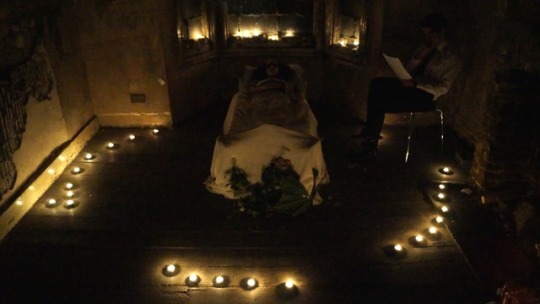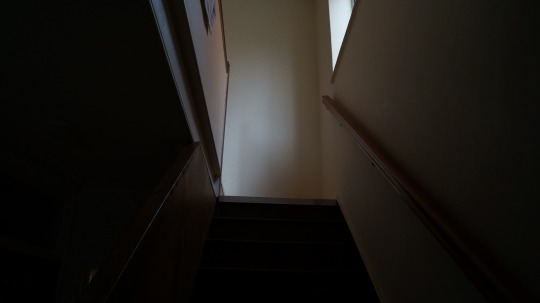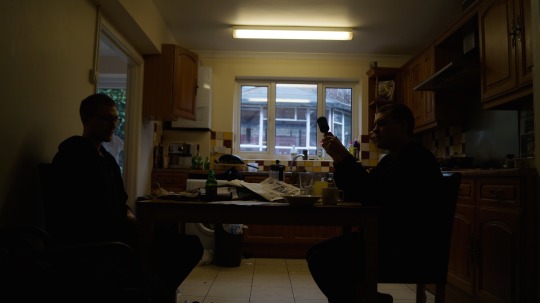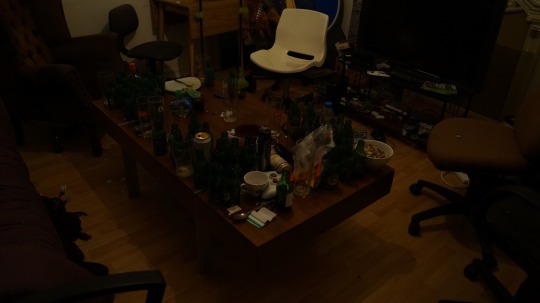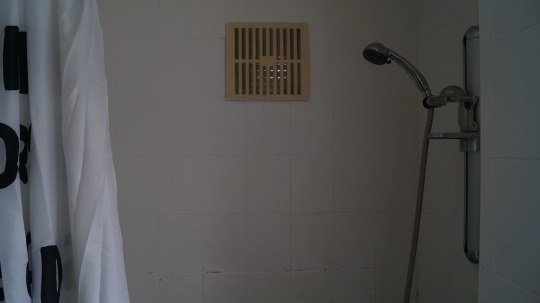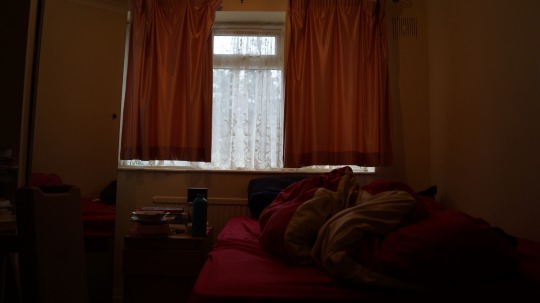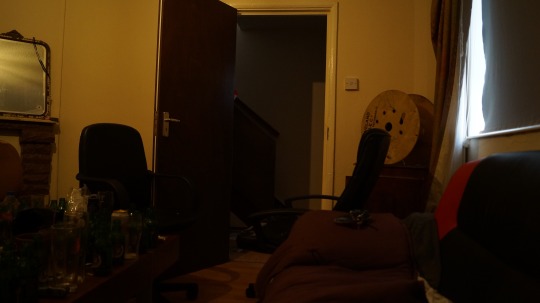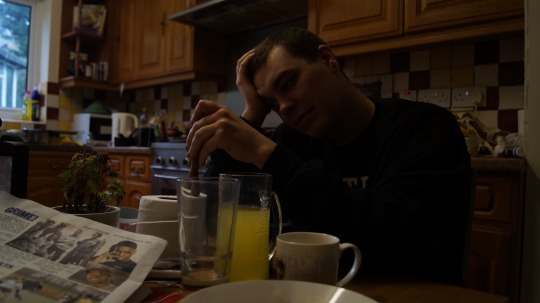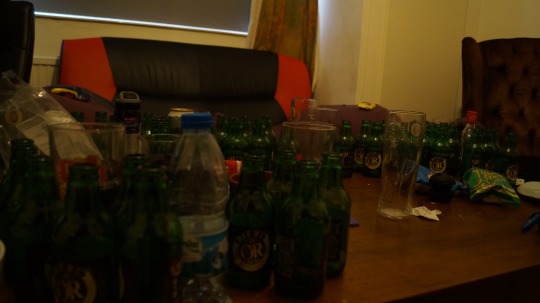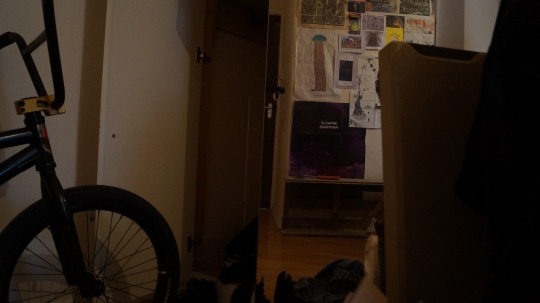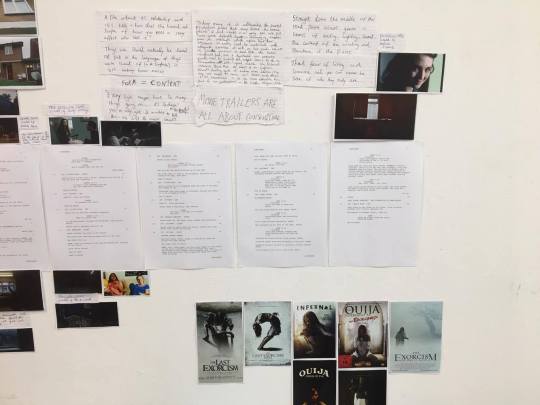Don't wanna be here? Send us removal request.
Text
Pictures with Love episode #3
A podcast/discussion with creative people whose work I admire about the films that have influenced them.
Jamie Rose & Jack Heydon.
youtube
0 notes
Text
Pictures with Love episode #2
A podcast/discussion with creative people whose work I admire about the films that have influenced them.
Sid Smith & Jim Bicknell-Knight.
Work: www.sidandjim.com/
youtube
0 notes
Text
Pictures with Love episode #1
A podcast/discussion with creative people whose work I admire about the films that have influenced them.
Patrick Brooks & Cassia Price. Their webseries Wenlock & Jones: https://www.youtube.com/watch?v=S7ppYcv_768
youtube
1 note
·
View note
Text
THE SQUARE (2017): the truth is more absurd
PUBLISHED as part of the Chelsea College of Arts Publication Vol. 3
note to reader: contains mild plot point spoilers, would recommend watching the film before reading! this is less of a review, more a response.
life is absurd, and the square wants you to know it. or more specifically: society is absurd. social order is fragile, paper thin. we’re indoctrinated into the way things run. the smallest thing can shatter the illusion of civility we live in.
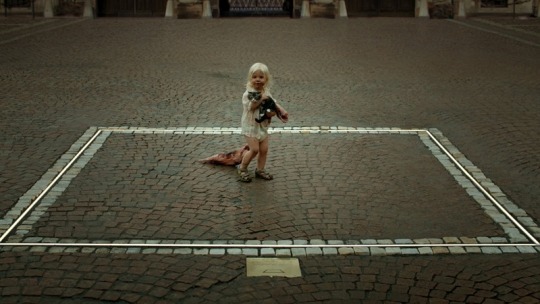
there is nothing scarier than sitting down to watch a film dealing with a subject you live and breathe. i remember watching Whiplash (2014) in a packed Covent Garden Odeon on a saturday night sitting next to my brother, a jazz drummer. everybody in the cinema really vocally loved it. there was thunderous applause as soon as the credits rolled. i remember him physically retching on the street in disgust at the way chazelle had portrayed jazz and music school. ‘music isn’t about competition or violence.’ Whiplash is a great boxing movie, but fundamentally it got jazz wrong.
The Square gets the contemporary art world right. most films which feature ‘modern art’ are cinematic nails on a chalkboard. their sledgehammer-level subtlety criticising it is played for comedy. most are shallow caricatures drawn with thick marker pens and it just comes across as cheap. the square draws with fine, precise ink. details are pitch perfect; from the clothes of the artists, the press releases, the fonts used in the in-world artwork, the atmosphere that exists in galleries. it plays it straight. it plays the absolute truth... and the truth is more absurd than any caricature could ever be.
v early on the film tackles the ‘is it art?’ question it was always going to tackle. our central character, the curator of the museum, is questioned by a journalist about a wordy press release. he summaries it using her handbag as an example- ‘if you place an object in a museum, does it make this object a piece of art?’... the film is clearly interested in refocusing and repositioning the way we see everyday things, and as a result we see everything in the film as such. every major set piece feels somewhat like a performance work, all leading to the climactic monkey scene, which rocked my fucking world. it’s easily one of the best scenes that encapsulates what a film is about i’ve ever witnessed. the ‘presented’, eye-like cinematography gets in your head. when i left the cinema i wandered around central london for hours, looking at things in a refocussed way. most notably, and the most common response from EVERYONE i’ve spoken to about the film, you *really* start to notice how many homeless people there are, and how numb you’ve become to seeing the most desperate, terrible situation a human being can be in on a daily basis.
SO. MANY. FUCKING. SQUARES. count them. really makes you think about framing of things. the frame you’re watching the film in... it seems quite the opposite of ‘a sanctuary of trust and caring. within it we all share equal rights and obligations.’
side note/strange takeaway: anyone who grew up with only 1 older/young sibling gets this. the film REALLY captures what that relationship is like, how you come as a pair although you’re at very different stages in growing, how you both react to the world together, especially in traumatic situations.
the square is not so much a criticism of the contemporary art world, more of modern society, using the contemporary art world as a lens to see it through. besides, there’s no better metaphor for the way we live than an art gallery. solitude, awkward politeness, inherent hierarchy, exclusivity, a common understanding of the way things happen, not *really* looking at anything. one loud noise destroys all of that.
and ughh everyone/everything in this film reminded me of the slade degree show THERE I SAID IT
2 notes
·
View notes
Text
Marvel’s The Avengers: America’s Perfect Post-9/11 Fantasy
INT. LIVING ROOM - AFTERNOON
CLOSE- A sparkly 'HAPPY BIRTHDAY!' banner. Balloons and party hats.
5 year-old EMILE sits eating Spider-Man cake with similarly little FRIENDS.
Emile's MUM and DAD stand with other PARENTS huddled around a small TV in the corner of the room.
Emile wanders over. He makes a face as if to say 'I've never seen so many grown ups look so scared.' He nudges to the front to see what they're watching.
CLOSE ON TV- A skyline. Two tall towers burn, the ashy smoke curling up out of view.
EMILE: Why is watching a movie better than my birthday?
CUT TO BLACK.
TEXT: 15 YEARS LATER
INT. LIVING ROOM - NIGHT
A lazy Sunday night. Emile, now older, sits on the sofa with his Mum. They're watching a TV in the corner of the room.
CLOSE ON TV: Joss Whedon's superhero team-up film The Avengers is playing. Big, blockbuster popcorn fun.
The 3rd act begins. Our heroes protect New York City from ALIENS invading from above. Space ships fly around crashing into buildings- dust and ash clouds the air coating CIVILIANS fleeing the carnage. Explosions, rubble falling, FIREMEN desperately try to help. IRON MAN heroically knocks off course the large flying...
WIDE- Emile turns to his Mum, perplexed.
EMILE: Why are we watching a version of 9/11 where Captain America saves the day?
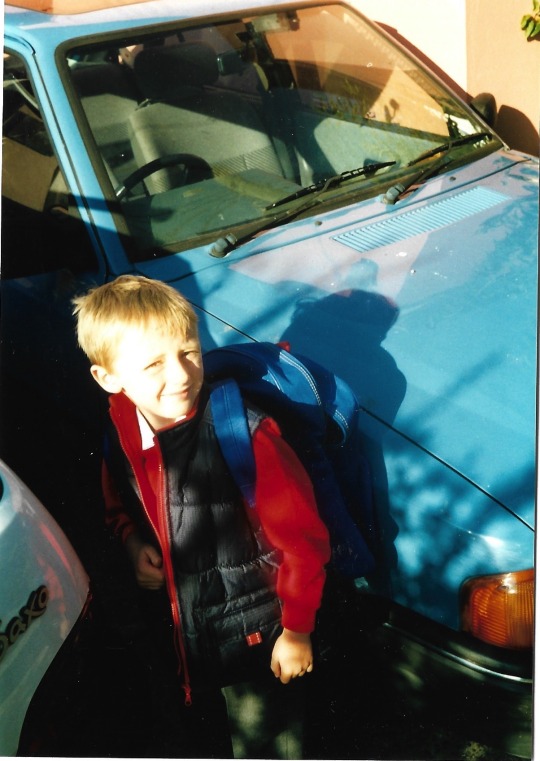
my 5th birthday, 11th september 2001
Marvel’s The Avengers (2012) is one in a long line of comic book adaptations part of the Marvel Cinematic Universe (MCU), a franchise of films beginning in 2008, distributed by Disney, that exist in a shared story world. The characters appear in each other’s films, the events of one impact the next. The MCU’s financial success is something cinema has never seen before. In ten years it’s become the biggest franchise in history. Eighteen films have grossed nearly $15 billion worldwide (Box Office Mojo, 2018), a third of that domestically (in North America). Almost all of them are ‘certified fresh’ on Rotten Tomatoes, indicating overwhelmingly positive reviews from critics. They’re ‘genuine pop culture events,’ (VanDerWerff, 2016). Every major studio has attempted to replicate the MCU’s success with a shared universe of blockbusters, chiefly superhero franchises. None have come close. Marvel jumped on the supehero wave that emerged in Hollywood throughout the 2000s and did it better than anyone else. Films with giant action set pieces have always made money, but not *this* successful and not for this sustained amount of time (the latest in the franchise, Black Panther, just overtook Titanic at the Domestic Box Office. The *eighteenth* film in the franchise). I believe The Avengers (2012) and the Marvel Cinematic Universe series of films can only be as successful as they are, both commercially and critically, in a post-9/11 world. Writing in 2006 on the way Hollywood would approach the topic, film critic Oliver Burkeman wrote ‘it’s a safe bet that we will get our share of superhuman 9/11 heroes in the months to come.’ He had no idea how literal his words would be.
It’s important to establish that the events of September 11th and cinema in general are intrinsically linked. Each impacted the other. ‘The events of September 11 were a cinema event, the most immediately and extensively documented catastrophe in human history,’ (Hoberman, 2012).
When you think of the terror attack on World Trade Center, or even when you read them numbers, 9/11, that image jumps into your mind- the Twin Towers burning. ‘The terrorists did not have the capacity to destroy the United States militarily,’ (9/11 Memorial, 2018), so they designed an attack for maximum visual, symbolic impact to spread terror as widely as possible. The Towers were the defining feature of New York’s skyline, with ‘views extended 45 miles or more from the top of the towers in every direction – far enough to see all five New York City boroughs’ (9/11 Memorial, 2018). By destroying them, not only did it ‘remove the tallest buildings from the country's most powerful city’ but, altered ‘the famous skyline forever.’ (Trivedie, 2001). The Towers no longer being there served as a constant reminder for New York of the attack. The Towers were the defining symbol of globalisation, American ‘power and influence’ (BBC, 2018). By striking them, a clear image was burnt into our minds of the terrorist’s aims. It was an attack designed to be seen on every news network in the world, in fact it became the longest uninterrupted news event in American history (Rutenburg, Carter, 2001). It was ‘a major event that was really a television event’ as archivist Brewster Kahle puts it. It was an attack designed to be the front page of every newspaper in the world, something Hans Peter Feldman’s installation ‘9/12 Frontpage’, 151 newspaper front pages from 12th September 2001, clearly shows was successful, (Age of Terror: Art since 9/11, 2018).
It’s widely reported the most common immediate response to the television footage of the attack was ‘it’s like a movie,’ (Overstreet, 2001), which seems ‘both automatic and indicating,’ (Buchanan 2013). American Journalist Michael Specter, an eyewitness to the attacks described how ‘felt like an extra in a movie, waiting for Bruce Willis to come and save the day.’ (New Yorker, 2001). It was defined in the language of Hollywood action cinema (Hoffman, 2014). It was ‘an iconic landmark and symbol of late capitalism felled in front of an audience of billions, the attacks staggered seemingly for maximum live TV impact,’ (Lyttelton, 2016) it’s the kind of scene ‘Hollywood has been imagining these past decades in the worst of its movies,’ (McEwan, 2001).
The idea began to take shape that cinema was responsible for creating the kind of imagery that inspired the design of the attack, American director Robert Altman famously saying ‘the movies set the pattern, and the people have copied the movies... nobody would have thought to commit an atrocity like that unless they’d seen it in a movie,’ (Rickli, 2009). To this day, certain films are cited as influences, writer Margret Atwood recently expressing she thinks ‘they got the idea from Star Wars,’ (Rife, 2018). It was thought to be designed so much in the language of Hollywood cinema, prominent American writers and directors were invited by a Pentagon-funded institute to ‘brainstorm possible terrorist scenarios and then offer solutions’ (Hoberman, 2012) in several meetings chaired by a military general, the implication being ‘what could be next? And how do we prevent it?’ A feeling of collective guilt began to grow among filmmakers, that the images they’d created were a source of inspiration for a national tragedy. It was widely reported that American entertainment would soften because of the attacks. Films and television would be ‘kinder, gentler,’ (Hoberman, 2013) ‘more wholesome’. The public surely wouldn’t want to watch mass death and destruction as entertainment after seeing it play out in real life.
American cinema changed after 9/11. On a basic level, films made in New York City pre-9/11 now had a dilemma- do they cut any scenes involving the Twin Towers? It’s the exact kind of landmark one would show to establish the location of the film in a 2nd unit shot, something that instantly puts you somewhere. It’s thought that as many as 45 films were edited, the Twin Towers digitally removed from New York’s skyline out of respect (Associated Press, 2011). Disney’s Lilo and Stitch (2002) had to reimagine and reanimate it’s key finale action scene. Characters hijacking a 747 passenger plane and flying it narrowly through skyscrapers in a city was changed to an alien spaceship flying through the Hawaiian mountains. Some movies made a point of doing the opposite. Mariah Carey’s album-tie-in film Glitter (2001), released little over a week after September 11th, famously kept an establishing shot of the Twin Towers in the final edit, apparently to ‘massive cheers and applause’ at screenings. ‘The rest of the movie is of course ridiculous,’ notes New York film critic Christie Lemire, ‘but people were just really happy to see the towers intact once more,’ (2001).
Predictions of tonal changes in the kind of movies Hollywood made proved not to be true. They didn’t ‘soften’, in fact, they went the other way. One of the world’s most recognisable franchises, EON’s James Bond series, broke Hollywood convention dramatically changing the tonal direction after their latest film being a financial hit. Die Another Day (2002) featured a car that can turn invisible- it was pure silly spy fantasy. It was also the most financially successful Bond up to that point. The next film in the franchise, Casino Royale (2006) is the polar opposite, described as ‘astoundingly bleak’ (Rothkopf, 2006). When asked ‘what prompted the grittier approach?’ after Die Another Day’s phenomenal success, producer Barbara Broccoli replied ‘Well… September 11 happened and it felt inappropriate for the films to continue down that fantastical path. So we decided to move to a more serious Bond,’ (Gamesradar, 2009).
In 2006, 5 years after 9/11, Hollywood finally tackled the tragedy head on, releasing two films months apart directly about the events of 9/11. United 93 (2006) directed by Paul Greengrass was a critical hit, scoring nominations for Academy Awards. World Trade Centre (2006) directed by Oliver Stone was a moderate financial success. Both needed to be slam dunks if more films were going to get made about America’s ‘most recent tragedy’ (VanDerWerff, 2016), and because neither were, Hollywood stopped exploring the visuals of 9/11 directly. However, these films did seem to open up something. The idea of releasing them seemed to ‘break a taboo regarding 9/11 as a subject matter or reference point moving forward,’ (Lyttelton, 2016). In the years following, intentionally or subconsciously, directors began to ‘incorporate the most significant images and events of 9/11 into their popcorn movie fun,’ (VanDerWerff, 2016) so consistently, film critic Kyle Buchanan remarks if a similar tragedy happened today ‘we’d now have a sickening number of summer movies to compare it to,’ (Buchanan, 2013).
Superhero films were no exception to the way 9/11 changed American cinema, in fact, they were uniquely affected. The most documented example of a film intertwined with the attack is Sam Raimi’s Spider-Man (2002) and the series that followed. A trailer played in cinemas all over New York through the summer of 2001 for the film, showing bank robbers escaping in a helicopter only to be caught in Spider-Man’s web... between the Twin Towers. After 9/11, the trailer was dropped as a mark of respect (Film School Rejects, 2017). The film was the highest grossing film of 2002 - beating The Lord of The Rings, Star Wars and Harry Potter. The US clearly ‘hungered for a figure who could save the country- or, in this case, at least defend New York,’ (Hsiaro, 2016). A scene in which New Yorkers fight off a Super Villain shouting ‘you mess with Spidey, you mess with New York. You mess with one of us, you mess with all of us!’ took on a new meaning.
It’s significant that superhero films only really began to gain credibility and find success in a post-9/11 world. There had been hits before 2001 in X-Men (2000) and Blade (1998), but not on the scale and consistency we’re use to now- there are 14 superhero films alone planned to be released in the next few years. ‘These films are pop culture’s most sustained response to tragedy,’ (VanDerWerff, 2016).
Superhero films adapted and changed after 9/11. Like Bond, the tones changed. We don’t really see ‘campy’ comic book stories with cartoon sensibilities like George Clooney’s Batman & Robin (1997) anymore. They all have a sense of real world stakes. Like all blockbusters, they began to incorporate key 9/11 imagery into their stories for emotional affect. Superman Returns (2006) perhaps most blatantly. ‘In one of the film’s most potent moments, a man falls from a tall height...a rough echo of 9/11’s famous falling man… This time, Superman is there. This time, the falling man lives,’ (VanDerWerff). Most interestingly, a vital component of all the stories changed. Superheroes can no longer prevent major destruction, terror and tragedy, ‘now they just respond to it. (Cracked, 2017). Or, to quote Iron Man in the climactic scene of The Avengers, ‘if we can’t protect the earth you can be damned well sure we’ll avenge it.’
The Marvel Cinematic Universe is the crowning achievement of the post-9/11 superhero boom. The films could not have existed pre-9/11. ‘All superhero films reference our most recent national tragedy,’ (Cracked, 2017) but the MCU is unique in it’s use of 9/11 imagery, notably and most interestingly in The Avengers (2012). The final act of the film, The Battle of New York, aliens pouring through a hole in the sky reigning terror on Manhattan while the superheroes fight them off. It’s significant the attack on the city is from above, the villains fly around the sky, it’s mostly framed with the characters looking up. As film critic Todd VanDerWerff points out, ‘there’s no real reason for the scene to be structured and shot this way… but it is structured and shot this way. Even though this is a cosmic war, it’s staged with the intimacy of a terrorist attack.’
The MCU’s films are rooted in real places, chiefly New York City. And they’re proud of it. Manhattan is mentioned more than 15 times in the screenplay (IMDB, 2013). It’s contemporaries either use stand in cities like Metropolis or Gotham (Batman V Superman: Dawn of Justice, 2016), or the cities are merely generic backdrops for the action (X-Men: Apocalypse, 2016). All the films use the imagery of 9/11, but weight is added to the images that are actually happening in New York. Again, there’s no real reason to do it, but they do.

On the left, an in-universe newspaper front page about the 3rd act of The Avengers (2012). On the right, the front page of the New York Post on the 12 September 2001 (Age of Terror: Art since 9/11, 2018).
Why should we take any of the imagery on anything other than surface level? It’s clearly just weightless, dumb popcorn fun... apart from the fact that the subsequent sequels make it clear the 3rd act of The Avengers was serious, and had in-world consequences. Even if we don’t take any of it seriously ‘the Marvel Cinematic Universe�� has decided to go back and reposition the big battle from Marvel’s The Avengers as its 9/11,’ (Hoffman, 2014). In other words, the affects 9/11 had on our world, the Battle of New York will have on the MCU. Because they take it seriously, we have examine it as such. The first film after The Avengers- Iron Man 3 (2013) - sees Iron Man ‘an emotional mess prone to anxiety attacks,’ (Hoffman, 2014) because of his experiences fighting in The Battle of New York. He shakes saying ‘nothing’s been the same since New York...I can’t sleep, and when I do I have nightmares.’ In a subsequent sequel, Captain America: The Winter Soldier (2014), the events in the 3rd act of The Avengers are used as justification for mass surveillance on civilians, and was critically acclaimed as ‘a blistering critique of the NSA security state,’ (VanDerWerff, 2016) Because the MCU has repositioned the battle as ‘its 9/11’, it leaves you wondering how far to go drawing comparisons with real world events. In the darker, more adult-focussed Netflix tie-in TV shows, the 3rd act of The Avengers is referred to as ‘the incident,’ (Jessica Jones, 2016) the thing that changed everything in New York City. Superheroes who had nothing to do with ‘the incident’ are violently targeted by civilians who lost loved ones in the battle. Is this somehow alluding to the rising hate-crime attacks on Sikhs mistaken as muslims in the months following 9/11 (Huffington Post)? As journalist Jordan Hoffman writes, if he’d had known the images were positioned as serious, perhaps he’d have ‘looked for more pathos in the Hulk flinging Loki around like a rag doll and muttering “Puny God.” Perhaps it was a less of a laugh line and more of a comment about the fundamentalist religion’s unsuitability with the liberty-loving New York.’
Why is The Avengers so wildly commercially and critically successful when it blatantly uses this imagery? Why do people want to actively pay to re-live the horror of September 11th 2001? Films have always been a projection of societal fears, all the way back to the first Godzilla (1954), a creature largely read as a way Japan processed their feelings about the nuclear bombs in Hiroshima and Nagasaki. ‘Hollywood isn’t just throwing in 9/11 references for shock value, it’s allowing us to process the tragedy through the lens of fiction,’ (Cracked, 2017). Through these films, audiences are able see their grief without having to directly look at it. The Avengers keeps ‘an image of our most recent tragedy where we can’t quite see it but where the dim vibrations of its sorrow still reverberate,’ (VanDerWerff). Using the imagery of 9/11, The Avengers seeks to take ‘back the iconography of New York’s destruction, from both the terrorists and real life,’ (Hoffman, 2016), to replace the images that scarred so many and have defined so much with a ‘360 degree swoop of Earth’s mightiest Heroes assembled in full flex before the sturdy columns of Grand Central.’ It wants to turn the tragedy of 11th September into ‘something out of myth, like the ancients might have recast a real tragedy as an epic tale of heroism,’ (VanDerWerff).
The Avengers is the perfect post-9/11 fantasy for America. Similar to the way Superheroes were born in the 1930s, on the cusp of another World War, drenched in the Great Depression- they needed a saviour, (Hsiaro, 2016). It’s an attractive fantasy, to have a team of Superheroes guarding you in the event of tragedy- to the point of self-reference, i.e. Ant Man’s first instinct when told of a great threat to America is ‘our first move should be calling the Avengers,’ (2015).
The biggest and most consistent critique of the MCU is the reluctance to kill off characters, all of whom seem to survive every deadly situation. With a whole slate of sequels announced, you know that all the characters survive because they’re in a film that comes out in two years time. The stakes are always relatively low. I think it’s also why they’re so successful in a post-9/11 world, especially the stakes in The Avengers. America craves for a world where ‘there are few consequences. There’s property damage and PR damage but no one dies,’ (VanDerWerff). Post-9/11 America needed to see a version of events where Captain America arrives just in time to save the day. Just in time, so they aren’t left in mourning.
BIBLIOGRAPHY:
Age of Terror: Art since 9/11 (2018) [Exhibition]. Imperial War Museum, London.
Ant Man (2015) Directed by Peyton Reed [Film] USA: Walt Disney
Associated Press (2011) How Movies Handled the Loss of the Twin Towers, available at: https://www.youtube.com/watch?v=fBVXW8wGtQI
Avengers: Age of Ultron (2015) Directed by Joss Whedon [Film] USA: Walt Disney
Batman & Robin (1997) Directed by Joel Schumacher [Film] USA: Warner Brothers
Batman V Superman: Dawn of Justice (2016) Directed by Zack Snyder [Film] USA: Warner Brothers
BBC (2018) ‘The 9/11 Terrorist Attacks’, BBC History, available at: http://www.bbc.co.uk/history/events/the_september_11th_terrorist_attacks
Box Office Mojo (2018) available at http://www.boxofficemojo.com/yearly/chart/?yr=2002
Black Panther (2018) Directed by Ryan Coogler [Film] USA: Walt Disney
Buchanan, Kyle (2013) ‘Is it Possible to Make a Hollywood Blockbuster Without Evoking 9/11?’, Vulture, available at: http://www.vulture.com/2013/06/hollywood-blockbusters-cant-stop-evoking-911.html
Burkeman, Oliver (2006) ‘The day they hijacked America’, The Guardian, available at: https://www.theguardian.com/film/2006/apr/28/1
Carter, Bill. Rutenberg, Jim. (2001) ‘AFTER THE ATTACKS: TELEVISION; Viewers Again Return To Tradition Networks’, New York Times, available at: https://www.nytimes.com/2001/09/15/us/after-the-attacks-television-viewers-again-return-to-traditional-networks.html?pagewanted=print
Captain America: Civil War (2016) Directed by Anthony & Joe Russo [Film] USA: Walt Disney
Captain America: The First Avenger (2011) Directed by Joe Johnston [Film] USA: Paramount
Captain America: The Winter Soldier (2014) Directed by Anthony & Joe Russo[Film] USA: Walt Disney
Casino Royale (2006) Directed by Martin Campbell [Film] USA: MGM
Cracked (2017) Why 9/11 Changed Superhero Movies Forever, available at: https://www.youtube.com/watch?v=fBVXW8wGtQI
Day, Aubrey. (2009) ‘Decade’s Best: Casino Royale’, Gamesradar, available at https://www.vanityfair.com/hollywood/2014/04/marvel-movies-9-11-pop-culture
Die Another Day (2002) Directed by Lee Tamahori [Film] USA: MGM
Doctor Strange (2016) Directed by Scott Derrickson [Film] USA: Walt Disney
Film School Rejects. (2017) ‘The 51 Best Superhero Movies Ever’, Film School Rejects, Available at: https://filmschoolrejects.com/51-best-superhero-movies-ever/
Glitter (2001) Directed by Vodie Curtis Hall [Film] USA: 20th Century Fox
Guardians Of The Galaxy (2014) Directed by James Gunn [Film] USA: Walt Disney
Guardians Of The Galaxy Vol 2. (2017) Directed by James Gunn [Film] USA: Walt Disney
Hoberman, J. (2012 Film After Film: Or, What Become of 21st Century Cinema? London: Verso
Hoffman, Jordan. (2014) ‘Marvel Movies Are Bringing 9/11 Back To Pop Culture, and It’s Still Too Soon’, Vanity Fair, available at https://www.vanityfair.com/hollywood/2014/04/marvel-movies-9-11-pop-culture
Hsiaro, Cassandra. (2016) ‘Post-9/11 world: What caused the rise of superhero movies’, Hs Insider Los Angeles Times, Available at: http://highschool.latimes.com/orange-county-school-of-the-arts/post-911-world-what-caused-the-rise-of-superhero-movies/
Huffington Post (2012) ‘History of Hate: Crimes Against Sikhs Since 9/11’. Huffington Post, available at: https://www.huffingtonpost.com/2012/08/07/history-of-hate-crimes-against-sikhs-since-911_n_1751841.html
Iron Man (2008) Directed by Jon Favreau [Film] USA: Paramount
Iron Man 2 (2010) Directed by Jon Favreau [Film] USA: Paramount
Iron Man 3 (2013) Directed by Shane Black [Film] USA: Walt Disney
Lyttelton, Oliver (2016) ‘From Denial To Acceptance: Hollywood And 9/11’, The Playlist, Available at: https://theplaylist.net/denial-acceptance-15-years-hollywood-911-20160908/2/#cb-content
Lilo & Stitch (2002) Directed by Chris Sanders & Dean Deblois [Film] USA: Walt Disney
McEwan, Ian (2001) ‘Beyond belief’, Guardian, available at: https://www.theguardian.com/world/2001/sep/12/september11.politicsphilosophyandsociety
Overstreet, Jeffrey (2001) ‘Shock Waves Tear Through A Shock Value Industry’, Christianity Today, available at: http://www.christianitytoday.com/ct/2001/septemberweb-only/9-17-41.0.html?paging=off
The Avengers (2012) Directed by Joss Whedon [Film] USA: Walt Disney
The Incredible Hulk (2008) Directed by Loius Leterrier [Film] USA: Universal
Thor (2011) Directed by Kenneth Branagh [Film] USA: Paramount
Thor: The Dark World (2013) Directed by Alan Taylor [Film] USA: Walt Disney
Thor: Ragnorok (2017) Directed by Taika Waititi [Film] USA: Walt Disney
Rickli, Christiana (2009) ‘An Event Like a Movie”? Hollywood and 9/11, COPAS, available at: https://copas.uni-regensburg.de/article/view/114/138
Rife, Katie (2018) ‘Margaret Atwood is pretty sure Star Wars inspired 9/11’, AV CLUB, available at: https://news.avclub.com/margaret-atwood-is-pretty-sure-star-wars-inspired-9-11-1825174414
Rothkopf, Joshua (2006) ‘Casino Royal: Movie Review’, Time Out, available at: https://www.timeout.com/us/film/casino-royale
Spiderman: Homecoming (2017) Directed by Jon Watts [Film] USA: Walt Disney
Spider-Man (2002) Directed by Sam Raimi [Film] USA: Columbia]
Trivedi, Bijal P. (2001) ‘Why Symbols Become Targets’, National Geographic, available at: https://news.nationalgeographic.com/news/2001/09/0913_TVsymbol.html
United 93 (2006) Directed by Paul Greengrass [Film] USA: Universal Pictures
VanDerWerff, Todd. (2016) ‘Superhero movies have become an endless attempt to rewrite 9/11’, Vox, available at: https://www.vox.com/2015/5/19/8577803/avengers-age-of-ultron-review-politics
World Trade Center (2006) Directed by Oliver Stone [Film] USA: Paramount
X-Men: Apocalypse (2016) Directed by Bryan Singer [Film] USA: FOX
9/11 Memorial (2018) ‘FAQ about 9/11’, available at https://www.911memorial.org/faq-about-911
1 note
·
View note
Text
LIFE’S TOO LONG: the hour film club
PUBLISHED as part of the Chelsea College of Arts Publication Vol. 1
sometimes, when you come home after a day's work, by the time you’ve cooked, eaten, washed up, had a shower, cried; before you know it, the top corner of the screen says ‘00:34′. you don’t wanna’ watch a three hour black and white existential film in a foreign language.... you only wanna’ watch a ONE HOUR black and white existential film in a foreign language!! be asleep by 01:30... welcome to the hour film club.
here’s my list of recommendations, one for every day of the week (and *SPOILERS* no, i’m afraid it doesn’t include any episodes of fucking black mirror)
DEKALOG: ONE (1988) directed by Krzysztof Kieślowski, 53 mins
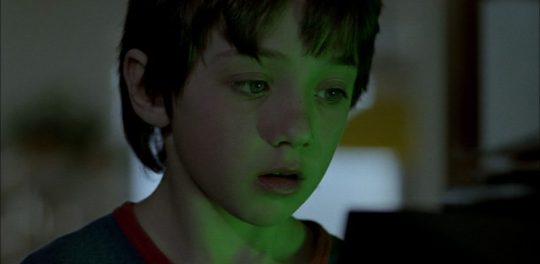
the first in a monumental ten-part anthology series based on the 10 commandments, set in a polish highrise, each telling the story of a different resident. every one of these hour stories is genius- the most human films you will ever see. the first is my favourite.
the quintessential hour-long film. poetic without being indulgent, explicit without being gratuitous, simple without being dull. a raw, moral graininess reflected in the film stock and harsh winter sun streaming through windows, clashing against the skin of our 2 main characters- genius lecturer Krzysztof and his 12-year-old son Paweł.
death, the nature of technology, banal proof of science vs blind faith in religion, growing up, that feeling of bitter, bitter icy cold freezing the tip of your nose, hilarity, despair, heartbreak, joy, deep allegorical imagery open to interpretation and the cutest freaking stuffed elephant ever... all packed into an hour. man this will break you.
‘EPISODE 8’ - TWIN PEAKS: THE RETURN (2017) directed by David Lynch, 58 mins
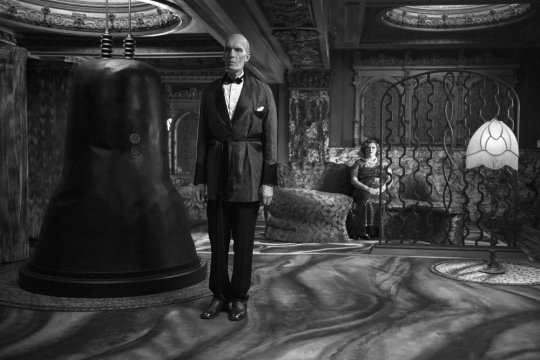
the original series of Twin Peaks that aired in the early 90s is often cited as birthing ‘prestige’ television as we know it today- your Game of Thrones ’, HBO quality, Netflix. .. 25 years later, David Lynch and Mark Frost have returned to kill it.
probably the closest we’ll ever get to seeing a ‘fine art film’ put out to a mainstream audience. the most discussed hour of moving image in a long time. earth-shattering. groundbreaking. part 8 of the new series of Twin Peaks is untampered ‘pure heroin Lynch’. a story that stands on its
own without any knowledge of the series/what’s come before necessary. pandora’s box is opened. a symphonic meditation on human’s capacity to create tools of evil, and how good can can fight it. mostly black and white, mostly speechless with predictably perfected sound design. utterly mesmerising and terrifying in equal measure.
p.s. always remember, david lynch pales in comparison when held up against most surrealists because he isn’t *really* a surrealist. he just follows his own logic.
THE MASS OF MEN (2012) directed by Gabriel Gauchet, 17 mins
vimeo
David Fincher called The Mass of Men the best short film he’d ever seen. it will rattle you to the core. an unemployed man arrives 3 minutes late for his appointment at the job centre. kafkaesque levels of bureaucracy that pile on top of eachother. a system where the rules are determined to humiliate people in their most desperate times. a viewing experience like being forced to try stick frayed thread through a needle... then abruptly having your hand cut off.
THE WRONG TROUSERS (1993) directed by Nick Park, 30 mins

something in the fabric of all aardman animation’s plasticine stop-motion is deeply sinister, uncanny and damn creepy... yet so human, warm and beautiful. cheerful yorkshire inventor Wallace & his highly intelligent dog Gromit’s second outing is genuinely one of the best directed 30 minutes ever put to film. a deceptively easy watch for something so complex and layered. most big hollywood blockbuster directors, with millions of dollars at their disposal, can only dream of creating a chase sequence as much of a spectacle, as thrilling, packed with details, engrained in character, with as impeccable sound design rooted in rhythm, and as much honest fun as the finale of The Wrong Trousers.
THE CABINET OF DR. CALIGARI (1920) directed by Robert Wiene, 74 mins

the godfather of horror cinema. the height of german expressionism. prime inspiration for hip 14
year old’s tumblrs. the carnival is in town.
a hellish smouldering world of black of white, thick eyeliner, wide eyes, strong movements to match the static shadows painted onto the sharp, angled buildings the characters manoeuvre through. the town seems infected by the evil of dr. caligari and his pet.
PICKPOCKET (1959) directed by Robert Bresson, 75 mins

few compose movement like bresson. a ballet of mundane grey suits and stuffy leather wallets.
there’s a reason he called his performers ‘models’ instead of ‘actors’.
TOWER (2016) directed by Keith Maitland, 82 mins

ok i know i’m bending the rules slighhhtly length wise, but trust me this is worth it. a documentary combining archival footage, talking head interviews and bright technicolour rotoscope animation to tell the story of america’s first mass school shooting in 1966, all from the perspective of the survivors.
‘the worst in one person brought out the best in so many others.’ out of so much pain comes so much humanity and beauty. in the most extreme situations, you never really know how you’ll react.
3 notes
·
View notes
Text
THE FUTURE IS BRIGHT: a *super* unoriginal ‘best films of 2017′ list
In life, we’re constantly asked what we learnt from things. It’s one way of measuring a completely immeasurable experience. Most films are built on this- ’character arcs’- how do they change and grow? What do they learn? (That’s not a negative thing, just the mechanics of this stick out when it’s done badly). With that in mind, I asked myself, from everything I watched this year, what did I learn?
THE BEST 12 ‘FILMS’ of 2017:
The first thing I learnt- films and TV series have become indistinguishable. It didn’t happen solely this year, but 2017 is definitely the ‘flag in the road’ point. Films are increasingly designed so they can be watched on a small screen with headphones, and most TV should really be watched on a big screen with proper speakers. And TV is sort of the wrong word. Netflix isn’t TV. I don’t know what it is. Just Long Form Storytelling perhaps? It’s certainly becoming less and less episodic. More and more feel like 10 hour films split into 10 parts so you can digest it better. So, this list is really the best 12 *things* of 2017.
The second thing I learnt- how you watch something is almost as important as what you’re watching. What headspace you were in, what time of day it was, if the room was totally dark, if someone a few rows in front of you was talking through the movie, if you’d seen the previous instalments in the series, hell- even if you’d seen the trailer. It all adds to how you think about the film. So, on the list, I’ve included where I saw it.
12. THE DISASTER ARTIST (directed by James Franco)

True story about the making of Tommy Wiseau’s The Room, the best worst film ever made.
I cried like I haven’t cried in years watching this. I don’t know what it was. Just something about the last act hit me so hard I couldn’t contain myself. And when you’re trying to contain yourself BECAUSE THIS IS NOT A SAD FILM AND YOU SHOULD NOT BE CRYING EVERYONE ELSE AROUND YOU IS LAUGHING PLEASE STOP CRYING it’s really hard to stop. It’s a story of ambition, heart and following your dreams no matter what.
Green screen! Lovely green screeeeen! Purely on an aesthetic level, whenever they’re shooting against that unmistakable, vibrant colour I just loved it.
You know when films do that thing and show pictures of the real people the film’s about before the credits so you can go ‘wow this film’s so accurate and got that detail right’?? This does a version of that, and it’s the only one that’s ever mattered/will ever matter.
The real Tommy Wiseau also has my favourite film related tweet of 2017:

Seen at BFI Southbank.
11. ORANGE IS THE NEW BLACK SEASON 5 (created by Jenji Kohan)
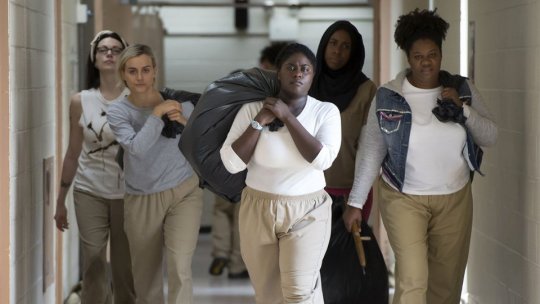
The lives of the women at Litchfield Penitentiary, a minimum-security prison in upstate New York. (the annimalllsss the animalllls, TRAP TRAP TRAP till the cage is fulllll...)
This show is about everything the opening titles suggest- women, decisions and time. What’s striking about OITNB is the characters never serve the plot. Plot *is* character. It’s there to serve them. It gives us a framework to waste time with these characters, because ‘all they’ve got is time’.
Season 5 is brave in terms of content and form. There are thousands of people more qualified to speak about the content, so I’ll leave it to them. Form wise: Orange is the New Black is Netflix’s most watched show, and probably it’s major tentpole along with Stranger Things. It has a well-oiled structure. Each season takes place over a few weeks, each episode focusses us in on one character, complete with flashbacks that inform us how they ended up in prison. Season 5 tears that to shreds, setting it basically in real time over 3 days. When it works, it *really* works. There’s no looking away. You feel the grind of what they’re going through. It sometimes leaves them too much time to pad out and we get some boring side plots- but on ambition alone I loved it.
It’s the perfect continuation and accumulation of previous seasons in many ways. The characters you know and love are in extraordinary circumstances. It brings out sides to their personalities that you never knew were there, but fit perfectly. Where all the characters are situated within the prison after the inciting incident is the best use of character geography *as* character I’ve ever seen. Tonally the series has gradually been getting nastier and nastier for a while, but there’s a scene towards the end of this season which is so nasty and so long and REFUSES to cut away even though you desperately, desperately want them too. It’s raw. It hurts. It’s a scene the show has always been heading for tonally and building towards dramatically.
Season 5 slots in just under 4 for me in terms of ranking them all- but it’s still damn good. One things for certain, 5 changed everything for OITNB. The game is different.
Oh, and Nicky’s the MVP.
Netflix.
10. BAD GENIUS (directed by Nattawut Poonpiriya)
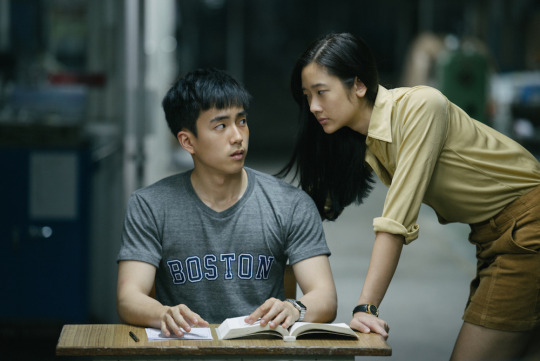
Thai Heist-Thriller. A genius high school student makes money after developing elaborate methods to help other students cheat.
WHAT A FUCKING RIDE!! The most fun I’ve had in a cinema all year. More stakes in this than most ‘end of the world’ superhero movies. Genuinely unpredictable.
The filmmaking is so good it makes you forget plausibility is sometimes being pushed. Amazing set-pieces. Expertly choreographed. Form and content perfectly married. This is the best way to tell this story, like a Michael Mann thriller, a Steven Soderbergh Oceans-style heist.
Every character is so rich and textured in their own way. So fully realised. You’ve met them all at some point in your life. It’s whimsical, but painful and genuinely emotional when it needs to be. Never pulls it’s punches.
2 years time, there will almost certainly be an American remake… and it’ll suck so hard. It’s rooted in Thailand, the socio-economic situation of people, the time zones, the pressure to succeed, and honestly- just hearing it in Thai.
SEE THIS FILM. SEE THIS FILM. SEE THIS FILM. SEE THIS FILM. If you take anything from reading any of this, SEE THIS FILM.
Seen at Vue Leicester Square.
9. NATHAN FOR YOU: FINDING FRANCES (directed by Nathan Fielder)

The feature-length finale of Nathan For You’s 4th season. It’s a show that’s difficult to describe without saying ‘trust me’.... but honestly, *trust me*. Nathan Fielder graduated from business school with ‘really good grades’. He offers outlandish solutions to solve problems for struggling small businesses. In Finding Frances, Fielder uses all the resources of his successful show to help an old Bill Gates impressionist track down his high school sweetheart. Trust me.
Nathan Fielder has accidentally and totally on purpose made one of the best documentaries of the last 10 years.
It’s funny how we remember things. Reality and fiction are blurred. Truth is irrelevant. What does real mean? Does it even matter if we remember it how we want to?
Laptop.
8. THREE BILLBOARDS OUTSIDE EBBING, MISSOURI (directed by Martin McDonagh)

A mother takes desperate steps to pressure local law enforcement to find her daughter’s killer.
Perfectly woven and layered characters. I fucking hate the phrase ‘the character arc’, but if I were teaching a class in it- I’d show this film.
A film about relationships, and every relationship between every character or creature or inanimate object is perfect.
McDonagh loves theatrical sensibilities. Nobody does grand, rich set-pieces quite like him… makes highly stylised situations feel real in the world he sets up.
I could have watched hours more of these characters interacting.
Seen at Embankment Garden Cinema.
7. BLADE RUNNER 2049 (directed by Denis Villeneuve)
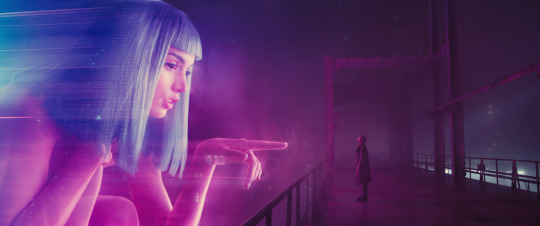
Neo-noir, sci-fi sequel to Ridley Scott’s 1981 classic.
I’m not a fan of the original Blade Runner. I appreciate it! It’s beautiful! and groundbreaking! but I just find it so heartless and cold. I just can’t connect to it. The best sci-fis are amazing stories with really fun furniture (the gadgets, tech etc.) The original is too much furniture for me. In other words, I had no reason to like this one IP wise. 2049 takes everything that could have been interesting from the original and expands on that. The furniture is just that- furniture. An amazing setting that enriches and serves the story. Everything is there to tell the story. I left the cinema feeling I’d experienced something the way that everyone talks about experiencing the first one.
The most expensive art film ever made. I literally cannot believe this exists. I cannot believe they gave Villeneuve £185MILLION to make a 3-hour long, philosophical film that has no blockbuster tropes: no loveable rogue hero; no ‘off-beat’ quippy humour to keep you interested; no CGI extravaganza 3rd act; NO.FUCKING.SKYBEAM with floating garbage spinning around it that threatens to destroy the world and the heroes have to stop it before everyone in the world dies; no setting up 5 other already planned sequels in the franchise so nothing important happens in this one. It’s a rare type of blockbuster in 2017- one that trusts it’s audience is intelligent.
Denis Villeneuve really is the most exciting director working today. This is just further proof. Arrival (2016) still my favourite of his, but I’m almost more in awe of him for this. Taking such a well-loved franchise and doing something new with it in a way that still feels respectful of what’s come before. It’s his film.
The only use of Hollywood’s new trend of digitally recreating actors (ala Peter Cushing in Rogue One: A Star Wars Story) that will ever matter. THIS is how you do it well.
Gender politics (we’re gunna’ go there, SPOILERS AHEAD and I know my opinion doesn’t really matter or count for anything on this just thought it’d be silly not to bring it up, feel free to disagree, v. interested to hear what everyone thinks about this!!) Lots has been written about the treatment of female characters in 2049. Most apt example I can think of to explain how I feel- Taxi Driver (1976), there’s a cafe scene in which the camera lingers on some black characters for uncomfortably long in a kind of parading manner, a ‘look at how terrible these guys are’ manner... it’s very understandable why one could interpret the film itself as racist. I’d argue the film is completely aware of what it’s doing- it’s putting us in Travis Bickle’s eyes, who is a racist character. I mean, we’re literally in his head the whole thing, hearing what he’s thinking and seeing what he’s seeing... I guess what I’m saying is- ‘it’s a decision.’ It’s not an offhand random shot where the filmmaker’s own gaze comes through, it’s a skilfully planned decision to make us question and think about something, in Taxi Driver’s case- what kind of man Bickle is. The treatment of women in 2049 *IS* a decision. It’s not Villeneuve lazily commodifying women, it’s him saying a world where women are only a commodity is a fucking bleak one. It’s a world where real women have been rendered obsolete because the height of success in our society (the CEO of a large corporation), an egoistical white guy with a god-complex manufactures life so women aren’t necessary for continuing the human race, and creates holographic partners for everyday men so they’re emotionally fulfilled without having to engage with actual women. And it’s so horrible. I mean, is anybody happy in this film? Is the picture of the future this film paints bright? It’s a film about how the arrogance of men will destroy everything. And on a base story level, it’s literally about guy who thinks everything is about him... but it turns out to be about a woman. Perhaps it’s lazy for the film to make the decision ‘it’s a patriarchal world so all the women are prostitutes and are treated badly so we’re just gunna’ do that’, but I dunno’... I think there’s more going on. I think Villeneuve is too good for that. I mean his last film was literally about a genius female linguist being the saviour of the world and how a mother’s love is the most precious thing. Would he really do such a U-turn and make a film where the female characters are just objects to be gazed at? I mean- maybe?? If any other aspect of the film felt like it was the studio meddling with Villenueve’s vision I’d buy that... but it’s just SO his film. And I think he’s clever enough to know who the primary audience of this film is- geeky 20 year-old guys. He draws them in with the surface (and all too familiar) images of the female characters, and then turns all of that on it’s head. Just my opinion. Obviously I can never be completely impartial- very happy to be converted the other way.
Seen at Picturehouse Central.
6. CALL ME BY YOUR NAME (directed by Luca Guadagnino)
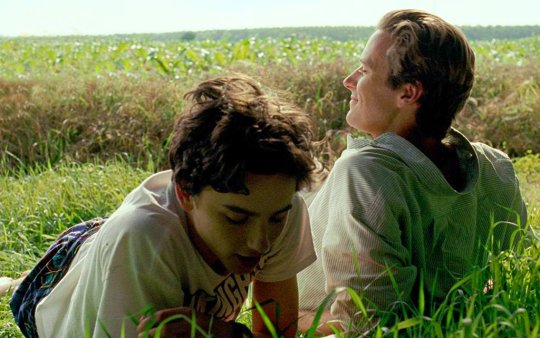
Somewhere in Northern Italy, Summer 1983, Elio’s life changes.
Sun-drenched Europe, the smell of warmth and twirling cigarette smoke, deep blue sky- pure, breakfast with a glass of apricot juice and an espresso, the sound of bike spokes spinning lazily.
I wish I could live with these people.
‘Later.’
The rawest and best final shot in the last 10 years.
Seen at Odeon Leicester Square.
5. THE BIG SICK (directed by Michael Showalter)
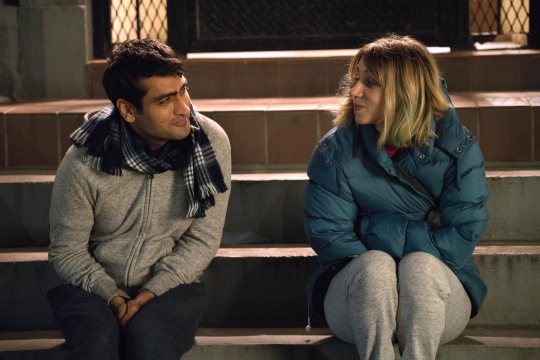
A Pakistani-born standup comedian/Uber driver and a grad student strike up an unlikely relationship.
MAGIC. The perfect retort to use when someone says ‘all rom-coms suck’. A genuine slab of gold that’s as funny as it is heartfelt. And it’s just SO the kind of thing I like.
I’m unbelievably bored of films and just art in general that’s terrified of being sincere in fear of being labelled sappy or over-sentimental. The Big Sick says ‘fuck you’ to that school of thought and goes for it.
Comedy, romance and drama are effortlessly blended- sometimes all in the same scene. And it never feels off-kilter, mainly due to the amazing performances. Kumail Nanjiani, Zoe Kazan, Ray Romano, Holly Hunter and the rest of the cast always play the truth of the scene- not the humour, the romance or the drama, just the TRUTH of the moment.
The perfect antidote to the year 2017 in general.
Seen at Aldeburgh Cinema.
4. YOU WERE NEVER REALLY HERE (directed by Lynne Ramsay)

Gulf War veteran Joe rescues children from trafficking rings.
This is a horror. And more terrifying than any jump scare, this whole film is populated by ghosts.
Deeply troubled, deeply disturbed. Beautiful. Precise. Scatter-brained. Focused. A violin strung too tightly, then played by a madman. How can something so stripped down and raw feel so symphonic and wholesome?
There are things in this that will play on loop in my head for the rest of my life. Images and sounds so seared into my brain they find me at the strangest of moments in a day, and I’m always left thinking about them for the rest of that day. It’s clever like that. Joe can never escape what he’s seen.
Francis Ford Coppola famously told press at the 1979 Cannes premiere of Apocalypse Now - ‘My film is not about Vietnam. It is Vietnam.’
You Were Never Really Here is not about PTSD... it is PTSD.
Seen at Odeon Leicester Square.
3. LOGAN (directed by James Mangold)
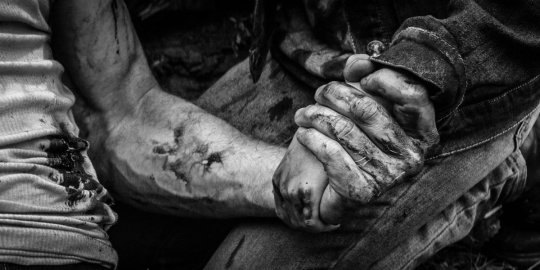
Wolverine’s last outing.
I’m not a huge fan of superhero films. Most are fun. Most are also lazy. Few will survive the test of time. Those that will use all the tricks in their genre box and do something interesting with them, transcend- Rami’s Spiderman 2 (2004), Bird’s The Incredibles (2004), Nolan’s The Dark Knight (2008)... and Mangold’s Logan.
So aged. So weary. Everyone is tired. Tired of running, tired of fighting, tired of living. Like three sharp metal claws jaggedly tearing through flesh, nothing is polished about this. Bloodshot eyes, skin like leather. He feels so much regret. Like most real heroes, he mourns those he couldn’t save rather than celebrates those he did. And it’s eaten him up inside for the hundreds of years he’s lived.
Here I go talking about furniture again... but every piece of furniture (superpowers etc.) is there to serve the story (and here the characters are story). Like so many blockbusters and superhero movies fail to do, this film is about something other than the furniture... e.g. how do you tell a story about dementia that gives someone who hasn’t experienced a family member suffering from it *that* feeling of sadness, loss, embarrassment, empathy and frustration? You give it to Charles Xavier (played by Patrick Stewart), a character you’re use to seeing as the leader, who always has a clever plan up his sleeve and has the ability to control other’s minds. You give it to him, and you force everyone watch the person they respected the most have to be lifted into bed while screaming about fast-food. It’s heartbreaking. Complex. It’s actually about something other than how in superhero world teamwork saves the day. Every ‘plot point’ and moment tells us something about these characters, even to a fault sometimes. SUBTLE: Logan pulling them jammed claws the way an old boy down the pub with arthritis feels his fingers. UNSUBTLE BUT STILL INTERESTING: making Logan fight the only thing he’s truly scared of- literally the version of himself that blindly obeys orders.
Everyone is SO fucking real. Just *watch* the way Daphne Keen eats that bowl of cereal.
Would highly recommend watching the ‘Noir’ Black & White version.
mild spoilers: It also features the best single edit of the year, from Laura stabbing the shit out of some dude to a flurry of scattered drum beats in the score... then that piercing animalistic roar rips through and all is silent... she spins.... from this:
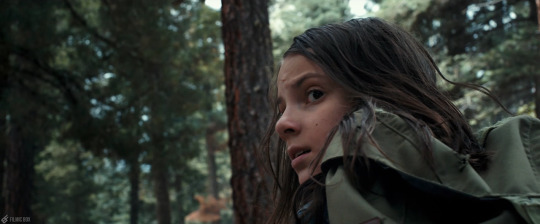
CUT to this:

An empty forest, the roar echoes out... a low bass note tolls like a funeral. Something is coming. Help is on the way, but it’s an untamed, ruthless, violent help. He’s near...
No one single cut has ever given me chills like that before.
Seen at Odeon Leicester Square & Picturehouse Central (Noir version)
2. TWIN PEAKS: THE RETURN (directed by David Lynch)
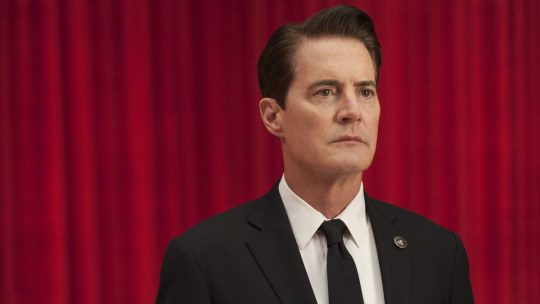
Agent Cooper’s odyssey back to the small town of Twin Peaks. The original series of Twin Peaks that aired in the early 90s is often cited as creating ‘prestige’ television as we know it today- your Game of Thrones’, HBO high-quality, Netflix and so on... 25 years later, David Lynch and Mark Frost have returned to kill it.
Earth-shattering. Groundbreaking. An 18-hour film (split into 16 parts) so layered, so complex i’m not even sure where to begin... and most of what I have to say has probably been written by someone else much more eloquently.
For the first 9 hours, I found The Return mostly frustrating. I love the original series so, so much (and the prequel film Fire Walk With Me is one of my favourite films of all time). When I hit hour 10, it was like all the clouds in my head suddenly cleared. I ‘got’ it. What I thought I wanted was all my favourite characters back again talking about cherry pie and coffee with that soft romantic filter. Lynch and Frost (the creators) knew I wanted that. They also knew I didn’t *really* want that... because, the original series will always exist. They knew nothing would disappoint more than a soft reboot. The Return is it’s own thing- within the universe of Twin Peaks, and... within the actual universe. Seriously, how can you categorise this? It jumps from screwball slapstick comedy to silent black and white existentialist horror to 10 minute live band performances... what is the point of even trying to categorise it?
On some of the individual parts: Part 3 is a low-fi, surrealist, near silent masterpiece. Part 8 is... ‘Pure Heroin Lynch’ and has already changed TV forever. Part 11 is the most satisfying instalment, fulfilling storylines from the original series in a measured and poignant way. Part 17 is the conclusion we wanted, sort of... Part 18 is the start of a new mystery, and one of the most haunting things I’ve ever seen.
Twin Peaks will change you life.
Seen on Laptop.
1. THE FLORIDA PROJECT (directed by Sean Baker)
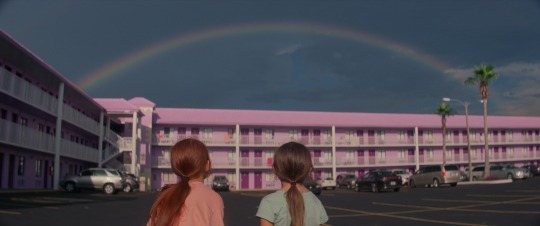
In the shadow of Disney World, 6 year-old Moonee and her friends spend the summer playing around the Motels they live in, while her mother Halley struggles to find a new job.
Pastel bright colours. Every person has survived a storm. Explore the wasteland of failed corporate America. Become a child again. The endless spinning of helicopter blades, a constant reminder of what they can’t do- escape.
Doesn’t ask you to like the characters. Doesn’t need to. Moonee has seen too much. Halley’s anger at herself and her life bubbles underneath every word and action, but she just doesn’t know how to fix it.
It is *SO* achingly beautiful it hurts. I find it hard to even watch the trailer without crying.
For the problems that face Moonee, honorary queen of The Magic Castle Motel, and the impending darkness that’s sure to come, she has the most powerful gift of all- finding hope where there is none.
‘See, I took you on a safari.’
Seen at Odeon Leicester Square & ICA.
DISCLAIMER- things that are not out yet in the UK/I shamefully haven’t yet seen and would likely be on my list too: Lady Bird (further DISCLAIMER i would actually kill somebody to see this) A Ghost Story Raw Phantom Thread War for the Planet of The Apes Coco American Vandal Mindhunter
BEST SCENES:
The third thing I learnt this year- it’s impossible to talk about a specific scene in a film without spoiling it. So... SPOILERS.
The Stairway Fight - ATOMIC BLONDE (directed by David Leitch)
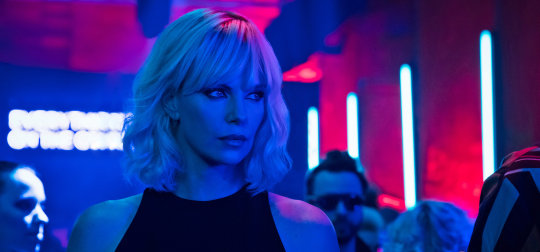
If someone could tell me what the fuck was going on in Atomic Blonde that’d be great but until then I’ll just marvel at how amazing the fight sequences are. Charlize Theron again puts herself at the centre of the progression of American action cinema following her iconic performance in Mad Max: Fury Road (2015). From the first time we see her, lying in an expensive bath healing her wounds and soothing her bruises, we know at some point we’re going to see how she got them. CUE: The 15 minute stairway fight sequence, made to look like a single continuous shot. Leitch and Chad Stahelski (his frequent collaborator and director of the also brilliant John Wick: Chapter 2) are determined to show general audiences what good action scenes look like. This 15-min beauty harkens back to the almost dance like hospital shootout in Hard Boiled (1992), with the rawness and determination of a Children of Men (2006) tracking shot. Charlize Theron (as MI6 agent Lorraine Broughton) fights her way through swarms of henchmen over several floors of an abandoned block of flats, all the while trying to protect Eddie Marsan (who wouldn’t want to protect Eddie Marsan??) Every punch, kick and throw HURTS. By the end, she and the final henchman are so exhausted there’s a sense they might just call the whole thing off- but something pushes them on. Oh, and there’s a 5 minute car chase all part of the same shot to end. Also features the BEST LINE OF 2017. In retort to the final henchman strangling her desperately whispering ‘Take this, bitch!’, she turns the tables, stabs him up hard, then before delivering the final knockdown, pushes her nose to his and asks- ‘Am I your bitch now?’ She doesn’t wait for a reply.
The Eyeless Woman - TWIN PEAKS: THE RETURN (directed by David Lynch)
youtube
Lynch’s best nightmare.
Train Hysterics - LAST FLAG FLYING (directed by Richard Linklater)
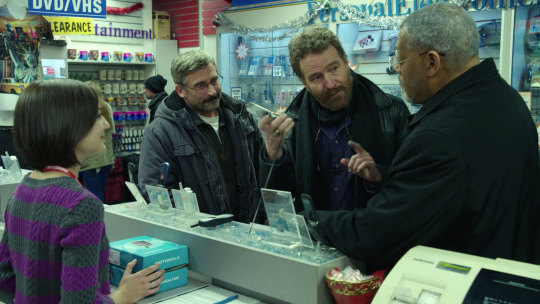
2003. A Vietnam veteran recruits his two oldest buddies, who he served with, to accompany him on a journey no one should ever have to take.
I liked this movie a lot- just missed out on the top 12 list. The standout scene happens little over half way through, the characters sitting in a storage carriage of a train talking about losing their virginities. It’s the best ‘characters uncontrollably laughing’ scene since The Intouchables (2011).
The Snowball epilogue - STRANGER THINGS 2 (directed by The Duffer Brothers)

Stranger Things season 2 was super mixed for me. I enjoyed it a lot. Kind of.
The first series is a perfect little story, with a perfect beginning, middle and end. I god damn *love* it’s characters so, so much. The plot was simple remixed 80s nostalgia beats, but really just a vehicle for you to get to know Mike and Eleven and Nancy etc. Think about how much each and every scene was practically designed to reveal more about who they were. It was so beautiful. Season 2 however had wayyyyy too much plot which was obsessed with itself and how cool it was and as a result left characters with nothing to do. In other words, in Season 1 all the characters had something to do because the plot came from them, in season 2 characters were given plot roles... like, explain to me what Mike did all season before he saw Eleven again at the v end of episode 8?? What did Jonathan’s storyline tell us about him we didn’t already know? Sure, they don’t have to set up who they are all over again, but the best sequels never take for granted we love the characters- they give us new reasons to love them.
It’s clear to see whose storylines had natural progressions from season 1 and they knew where they were going, and those they had to think of something because Netflix desperately wanted another season quickly. The only original characters season 2 really worked for were Steve and Will. ‘Steve The Babysitter’ was the perfect progression for his character- him voluntarily discarding his Alpha-Jock status, seeing it was all bullshit, now his caring side comes out. Fuck, think how much you disliked Steve all of Season 1 compared to how much you love and deeply want him to be ok at the end of season 2. THAT’s good writing. His storyline was perfect for his character, it kept giving us new reasons to love him. And Will. Holy shit. His descent into Reagan-level possession was the most engaging part of season 2. Basically all of the story came from him. And Noah Schnapp is so damn good. I think simplicity is the key. His story was unpredictable till the last moments, when you realise it was inevitable. It has a clear premise, unlike most of season 2.
In the first, there were very clear overarching premises from the start- Will Byers is missing, Eleven has escaped from the Lab, the Demogorgon is on the loose. Simple premises that allow our characters to manoeuvre around... Season 2 doesn’t really have one other than Will is clearly still connected to the Upside Down... the Mind Flayer doesn’t really start as a concept till the penultimate episode... Hopper and Eleven living together maybbe?? but we’re not really given enough time with them. Everyone else is left with nothing to do, or something that doesn’t really serve their character... UNTIL THE LAST 15 MINUTES.
The Snowball epilogue was like coming to the surface after swimming laps underwater- I sort of enjoyed the laps but I’d rather just be able to breath. All the self-indulgent 80s nostalgia *plot* is done, and all the characters have interesting things to do!! Steve giving Dustin tips dropping him off, and then that longing look he gives towards the hall. Dustin realising ‘I don’t look like Steve Harrington’ after being rejected by every girl at the ball and dejectedly crying... and in comes Nancy to save the day!! Genuinely one of the most beautiful moments in anything all year (notice how we learn more about Nancy’s true nature in this one moment that anything else she really did all season??) Jonathan nearby keeping an eye on Will and being his helpful self taking the Ball pictures. Lucas ignoring what the rest of the group think about Max and asking her to dance. Will actually going to the ball, acting as normal as he can and dancing with someone!! Joyce and Hopper nervously wait outside and reminiscently share a smoke as they did in their highschool days- contemplating on how they probably won’t ever feel like they aren’t worried about their kids... and finally Mike and Eleven just having a bit of happiness for once- actually going to the Snowball together, a beautiful conclusion after speaking about it at the end of Season 1.
As each moment passed in this glorious sequence, I loved the characters more and more. They aren’t doing anything supernatural or life threatening, but the stakes feel SO much higher than they had all season. It’s real. They aren’t shackled with ‘advancing the plot’, they can just be themselves. And I loved it.
BEST CINEMATOGRAPHY:
Time’s Arrow, Episode 11, BoJack Horseman Season 4 (created by Raphael Bob-Waksberg)
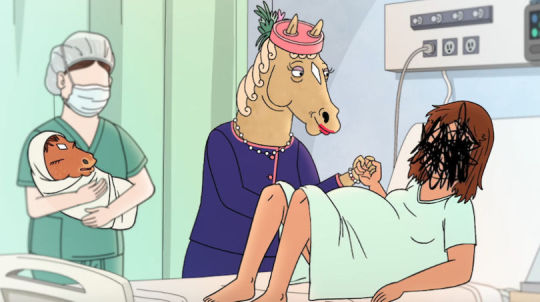
BoJack Horseman has been the most visually beautiful cartoon for a while now, it’s breathtaking season 3 silent underwater adventure Fish out of Water helped to gain it much appreciated wide applause. Time’s Arrow is a different beast. Genuinely horrifying. A mind cracked into a thousand pieces and glued back together into something resembling crazy paving. The animation is disturbing. Really disturbing. The nightmarish images running through the failing mind of an old woman with dementia. Images of her regrets, the neglect and abuse at the hands of her parents. Memories burn and melt away like plastic in a fire. The faceless humans and constant scribble over Henrietta’s face haunts me. Beyond the obvious sinister imagery, it means something. A puzzle with too many missing pieces to really make out what the picture actually is. And we’ll never really know.
It’s not the first thing that pops into mind when you think of ‘cinematography’, but Time’s Arrow is the best visual storytelling since... the previous season of BoJack Horseman.
BEST PERFORMANCES:
Cate Blanchett as various in MANIFESTO (directed by Julian Rosefeldt)
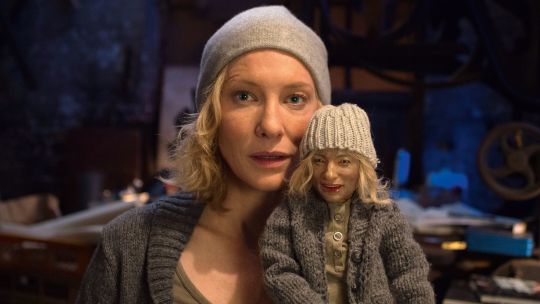
Originally a critically acclaimed multi-screen video installation in which Cate Blanchett plays 13 different characters, ranging from a school teacher to a homeless man, performing artist’s manifestos in 13 different scenarios. Part of the financing deal was Rosefeldt had to cut a 90 minute, linear version of the piece for a cinematic setting.
NO one could have pulled this off like she did. She’s running on adrenaline and pure bravery. She makes interesting choices at every twist and turn. How does looking at her never get tiresome? Every jump from character to character feels genuine. She blew my mind- I knew I was looking at the same person over and over again, but I also *knew* I was looking at 13 different people.
A masterclass.
Kyle MacLachlan as various in TWIN PEAKS: THE RETURN (directed by David Lynch)

2017 is the year of staggering ‘multi-character’ performances. Kyle MacLachlan’s involvement in the new season of Twin Peaks was basically the only thing anyone knew about it going in. And he is the heart of this season in so many ways. Returning to a character 25 years later must be a daunting prospect, but MacLachlan shows no fear. Not only does he play the pragmatic, joyful Agent Cooper we all know and love, he plays his steely, pure evil doppelganger Mr C, child-like amnesiac Dougie Jones and in the final episode... someone quite special. And he makes it look so damn easy. He is the fabric that holds together The Return.
THE ‘KIDS’ in EVERYTHING
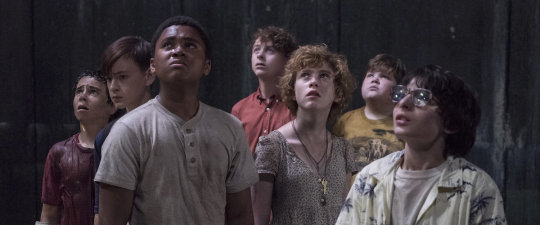
2017 has been a bad year for Hollywood. Ultimately though, it will be looked back on as the turning point. THINGS CHANGE NOW. The old guard is running from their past scared. And they should be scared. Uma Thurman is coming to murder them all. There is no room left for the Harvey Weinstein’s, the rotting core of top-down abuse has been exposed. Brett Ratner can fuck off with his swaggering playboy image and terrible movies.
What is truly uplifting is who is going to replace them. A new generation of pure, true artists that this year has shone a spotlight on.
The future is Brooklynn Prince and Bria Vinaite, stars of The Florida Project. The future is Timothée Chalamet, whose central performance in Call Me By Your Name is the realist, rawest thing ever. The future is Saoirse Ronan, the next Meryl Streep. The future is Daniel Kaluuya, who has finally gained world-wide recognition for his stunning leading performance in Get Out. The future is Finn Wolfhard, Millie Bobby Brown and all of the kids from Stranger Things, who masterfully manage the horrific pressures of being thrust into the tabloid spotlight at the same age most of us just want to cry in our rooms. The future is Sophia Lillis and the rest of the Loser’s Club from IT (a film with the most oppressively terrible sound design ever yet they still manage to make it fun and watchable.) The future is Daphne Keen, the best on-screen cereal-eater who almost steals the film from Hugh Jackman in Logan. The future is Lucas Hedges, someone with rare human fingerprint over every word he speaks in Three Billboards and last year in Manchester By The Sea. The future is Donald Glover, the most creative, multi-talented young artist alive. The future is Caleb Landry Jones, who’s had maybe the most impressive year, with standout supporting roles in The Florida Project, Twin Peaks: The Return, Get Out and Three Billboards Outside Ebbing, Missouri. The future is Tessa Thompson, the best thing about Thor: Ragnarok. The future is Michael B. Jordan, Chadwick Boseman, Lupita Nyong'o, all the team behind the upcoming Black Panther film, helmed by Ryan Coogler. The future is Barry Jenkins, director of best picture winner Moonlight. The future is Daisy Ridley, John Boyega, Oscar Isaac, Adam Driver and Kelly Marie Tran, the new faces of the most popular franchise ever. The future is Alice Lowe, a force to be reckoned with. Writing, directing and starring in a feature film is difficult enough. She did all of that while heavily pregnant. Oh, and it was her debut feature. It’s called Prevenge and it rocks. The future is Ava Duvernay, a beacon of hope- cannot wait for A Wrinkle in Time, which drops early next year. The future is Sean Baker, the most empathetic filmmaker working today. The future is Patty Jenkins and Gal Godot who have revolutionised the superhero film and inspired a generation of little girls with Wonder Woman. The future is Kumail Nanjiani and Zoe Kazan, who I’ll follow in whatever they do after The Big Sick. The Future is Jordan Peele, the most exciting new director. The future is GRETA GERWIG, mumblecore queen turned saviour of cinema.
So, what did I learn this year? Well, Agent Dale Cooper is certainly one of the best characters of all time. But most of all: amongst the darkness of everything that’s happened within the film industry in 2017... there’s hope.
The future is bright.
1 note
·
View note
Text
six films to watch before you start making
The six films i’ve learnt the most from...
I HAVE ABSOLUTELY NO AUTHORITY TO REALLY WRITE ABOUT THIS OR BE TRUSTED BUT MAYBE THIS WILL BE HEPFUL TO SOMEONE. MAYBE.
El Mariachi (1992) directed by Robert Rodriguez

- First feature from Rodriguez notoriously made on a $7,000 budget, most of which was spent on film stock and developing the negatives. A wicked little action movie.
- THE ONLY THING IN YOUR WAY IS YOU. Don’t talk about how you ‘aspire to be a filmmaker’... be one. There is no excuse to not do it.
- Use every restriction as a strength. Turn it around. Use it to your advantage. ‘One person’s mistake is another’s art.’
- ‘The money hose’. There is a creative, cheap way around most problems. Don’t start ‘the money hose’ and point it at your problem- even if you can afford to. Anyone can point the money hose- I mean, it usually sort of solves the problem?? but it’s sooooooo boring. Often the most interesting things come from these situations. Think of creative ways to get around things.
- When you have limited resources, tripods and stands suck. Pick up your camera!! Move!!
- You are *probably* right. And if you’re wrong- at least you made a decision.
Sunrise: A Song Of Two Humans (1927) directed by F.W. Murnau

- Classic. The most masterful love poem every put to film.
- VISUALS. Film is a visual medium. This film has some of the finest visual storytelling of all time. You can see every character’s past, tell how they’re feeling in the present and think about where they’ll end up all just from looking.
- The over-arching question when planning a project- ‘why is this a film?’ Keep asking yourself. Why isn’t it a play? Or a radio play? or a novel? Why does it *have* to be a film? If it could be anything else- go back to the drawing board.
Pressure (2006) directed by Lena Dunham
youtube
- The camerawork sucks. The acting is ropey. One of my favourite student films of all time.
- If you have a voice- it’ll come through. Despite it failing in basically every technical category, this film has a voice. Dunham’s writing is so, so good years before she has anything to elevate it with.
- Truly, no one cares about image quality if your story is good. Don’t worry about what camera you’re using. You can never replicate the look of a Hollywood film. Don’t try. You have a limited amount of effort and time. Spend it working on the story.
Apocalypse Now (1979) directed by Francis Ford Coppola

- ‘The rain patters deliberately. It's trying. It's trying real hard to cool off the world, but to no avail. The endless sweat parading down the faces of the losing minds and the tired souls only enhances the fever dreams and the sights of the figures within the shadows. The greatest cinematographic achievement of all time.’ - a review from ‘SilentDawn’ on Letterboxd (great website) that sums up watching this film perfectly.
- PERSPECTIVE. Whatever you’re making, you’re not making Apocalypse Now. Calm down. It took me too long to realise that I’ll never be able to make a film as good as this... and when you accept it, you feel weirdly free. There are no heights you have to reach. Tell your story and maybe it’ll be as good as Apocalypse Now in its own way (it probably won’t be but that’s ok!)
- Sound is 50%... maybe even 51%. Cannot stress that enough. People will watch low quality visuals but they will not listen to bad sound. Use the sound to tell your story.
I Think This Is the Closest To How The Footage Looked (2012) directed by Yuval Hameiri and Michal Vaknin
vimeo
- Hundreds of articles are written every year about how cinema and filmmaking are dead. They’re all wrong. This short singlehandedly proves it’s still very much alive and kicking.
- Innovate. Tell your story in your way, a way only you could tell. Put your fingerprints on it. Be personal. The best work is really a self portrait.
- You don’t need much to make something staggeringly good.
Citizenfour (2014) directed by Laura Poitras
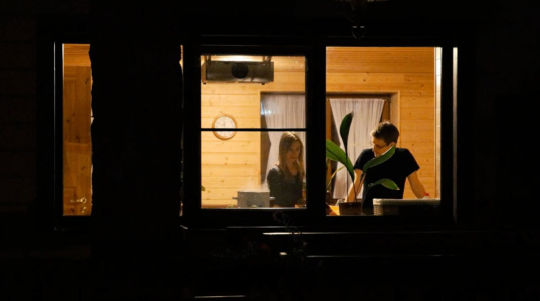
- ‘The Edward Snowden film’. I sometimes struggle with the idea this actually exists.
- Take risks. They’ll pay off. Or maybe they won’t- but it’s usually worth it.
- Film is important. Film can and will change the world. It’s a powerful, powerful medium that can reach every walk of life. It can make people feel and empathise like nothing else. Make something important. Respect film’s power and use it to make life on this dying rock a little better for everyone.
0 notes
Text
London Film Festival 2017 or: the real world sucks just watch films for 2 weeks
I feel like I’ve spent my entire student loan seeing things at the London Film Festival, which ran over the last few weeks.
Was worth it.
#1: MANIFESTO, directed by Julian Rosefeldt, 90 mins
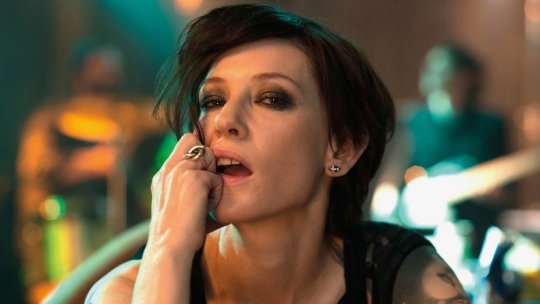
- Originally a critically acclaimed multi-screen video installation in which Cate Blanchett plays 13 different characters, ranging from a school teacher to a homeless man, performing artist’s manifestos in 13 different scenarios. Part of the financing deal was Rosefeldt had to cut a 90 minute, linear version of the piece for a cinematic setting. Provides some super interesting results.
- Clearly a translation, but an interesting one. Making the viewer watch it beginning to end highlights the flaws in that translation from installation to cinematic setting (can get too much to digest sometimes), but when it works, it *really* works.
- More than anything, made me think about the cinema as a space- question the realms of it and what we’re putting on a big screen.
- CATE FUCKING BLANCHETT!!!! i am convinced no one could have pulled this off like she did. She’s running on adrenaline and pure bravery. She makes interesting choices at every twist and turn. A masterclass.
- You HAVE to be fully, super awake and willing to give this your full attention from the start. It’s slow and beautiful and wonderful... but it is slow.
- Genre hops from scenario to scenario perfectly... from Clio Banard-esque social realism to Rachel Maclean-like cartoonish sci-fi.
- Some things Julian Rosefeldt and Cate Blanchett said in the talk afterwards that seemed interesting (lots of paraphrasing): - The white cube is a prison... talking to people who already agree with you... Cinema has a bigger audience with more coincidental audience members- Cate Blanchett fans from the new Thor film mayyyy see this... - Ask ‘would anyone be interested in seeing this?’, NOT ‘will anyone like it?’ - ‘If I could say what everything means, I should stop doing art.’ - ‘Your brain attends to things differently when watched linearly’ - ‘Art’s role isn’t educative- it’s provocative.’
4/5.
Opens November 24th.
#2: BATTLE OF THE SEXES, directed by Jonathan Dayton & Valarie Faris, 121 mins
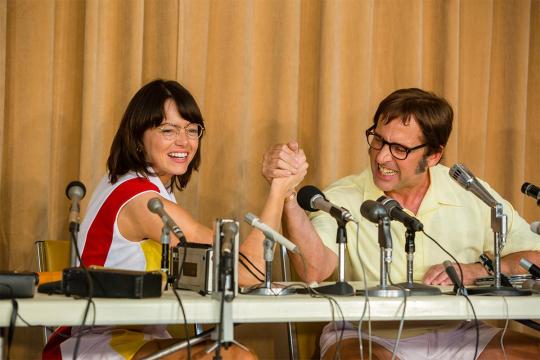
- True story of 1973 tennis match between Billie Jean King and Bobby Riggs.
- Rousing good fun. A real crowd pleaser. I saw the Gala screening at the Odeon in Leicester Square... the perfect way to watch- with lots of people, all feeling the Hollywood-ised, over-dramatised, over-sentimental beats together... and super enjoying it.
- It’s less subtle than MOTHER! (2017) about what it’s saying, but has a shining, naive optimism to it that you just kind of have to smile at.
- Emma Stone and Steve Carrell as King and Riggs hold all the moving pieces together. They add weight to potentially weightless, throw-away moments.
- All supporting performances great too- Sarah Silverman the MVP. Andrea Riseborough continues to be a chameleon, effortlessly embodying everything about who she’s playing, and it doesn’t even look like she’s trying. And hey! it’s super nice to Martha MacIsaac back on screen with Emma Stone! Their first time together on screen since Superbad (2007).
- The romance between Billie Jean King and Riseborough’s character Marilyn Barnett is easily the most engaging aspect of the film. The only time it leaves Hollywood feel-good territory. Something so magical watching them drive the sun-kissed California roads together listening to ‘Rocket Man’.
3.5/5.
Opens November 24th.
#3: OUR TIME WILL COME, directed by Ann Hui, 130 mins

- 1940s Japanese occupied Hong Kong. Fang Lan, a young primary school teacher, gets involved in the resistance movement and rises to become a legendary figure in the fight for freedom.
- STAKES. Really, really gets how to set up stakes for the characters. It’s a film about all the small things, the little fights in a war that will eventually add up to victory. Not assassinating all the leaders of the opposing army, just stealing a map that’s been put in a bin in an enemy outpost, hoping perhaps it helps. It’s a section of a larger painting. EVERYTHING feels dangerous. Every character is in danger at every moment, and is always punished for making the smallest mistake. Gives the sense that the oppressive State is ALWAYS watching. It demands you never become de-sensitised to the violence which leads to that immediate sense of danger.
- Had a restrained cheapness to it which I actually quite liked. Every now and then you get some goofy looking VFXs and some badly dubbed ADR, but the restraint keeps everything feeling grounded and human.
- Runs at it’s own pace/abides by it’s own structure, which may be too slow/anti-climactic for some, but I liked it for the most part. Playing by it’s own rules and truly being what it wanted to be... which sometimes worked and sometimes didn’t.
- The moments it steps out of the main story and does a docu-drama thing... just why? Came across so half-baked. Similar to the 3 time scales in Nolan’s Dunkirk (2017), there was never really a moment of release, an ‘oh! that’s a really interesting decision to do that!’ moment. Just left me kind of baffled to why?
- Genuine moments of magic that I wouldn’t dream of spoiling. Seriously some of the most creative, inspired scenes I’ve ever seen.
- Some guy (wearing a BFI lanyard??) sitting a few seats away kept repeating phrases from the film outloud in a strange voice? Why would you do this??
3.5/5.
UK release date unknown, probably some time in 2018.
#4: LAST FLAG FLYING, directed by Richard Linklater, 124 mins

- 2003. A Vietnam veteran recruits his two oldest buddies, who he served with, to accompany him on a journey no one should ever have to take.
- Richard Linklater continues to prove he can effortless hop between genres like no one else, but the film is still packed full with ideas he’s played with before.
- Performances are uniformly and predictably excellent. Bryan Cranston’s Sal is like the crazy friend of your parents who’d show up every few years in a beaten up old car and give you a pack of smokes for your birthday. Laurence Fishburne says ‘praise Jesus’ every 2 minutes and it’s amazing. Steve Carrell has a quiet dignity to him that’s really special.
- Linklater knows exactly what he’s doing with his camera (water is wet), but it kills me to say it felt visually bland like his films never have.
- Features the best ‘characters uncontrollably laughing’ scene since The Intouchables (2011).
4/5.
Opens 3rd November.
#5: THOROUGHBREDS, directed by Cory Finley, 90 minutes
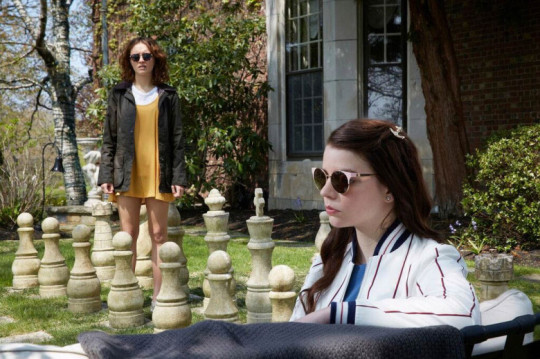
- Two rich-kids from small town Connecticut hatch a plan together.
- Ugh, just.... what’s the point? It’s not boring, but every frame just had me thinking ‘why is this happening?’ So disappointingly transparent. I could see the director sitting planning the movements and cuts. Painfully ‘first-feature’ like. Should have been a rich, twisted delight, but was just so vapid and empty.
- Olivia Cooke is one of my favourite rising actresses. Has one of my favourite performances ever as Rachel in Me and Earl and The Dying Girl (2015), and dammit I cry every time I watch her in it. In this... she does a good job with what she’s given. Anya Taylor-Joy is fun too.
- Badly costumed?? So rarely actively think that.
- Music was fun but as empty and ultimately weightless as the rest of the film. Felt like an afterthought to spice things up.
- Anton Yelchin’s character was the only person in the whole film I cared about. Brings a greyness to such a black and white film. What a fucking loss to the world man.
2/5.
Opens 9th March, 2018.
#6: CALL ME BY YOUR NAME, directed by Luca Guadagnino, 130 minutes

- Somewhere in Northern Italy, Summer 1983, Elio’s life changes.
- Sun-drenched Europe, the smell of warmth and twirling cigarette smoke, deep blue sky- pure, breakfast with a glass of apricot juice and an espresso, the sound of bike spokes spinning lazily.
I wish I could live with these people.
‘Later.’
4.5/5.
Opens 27th October.
#7: THE SHAPE OF WATER, directed by Guillermo del Toro, 119 minutes
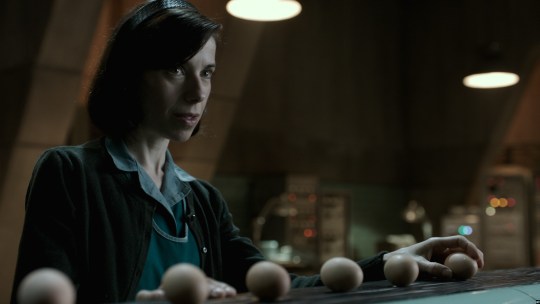
- 1962, Cold War America. A mute cleaner at a government research facility, Elisa, strikes up an unlikely relationship.
- Del Toro just *knows* what he’s doing. It’s all so effortlessly confident. So rich and fulfilled. Such commitment to everything.
- The first half is fantastical and brilliant. The second.... loses something. Still has moments of genius, but too much plot. Fizzles out in a disappointing way.
- Reminded me in a lot of ways of Edgar Wright’s Baby Driver (2017). Both are clearly projects the directors have wanted to make for a while, both have amazing first acts then don’t quite know what do with themselves. However, Shape has pure heart that carries it through any rough patches. It feels like it’s actually about something, not just an exercise in style for the director.
3.8/5.
Opens 16th February, 2018.
#8: LUCKY, directed by John Carroll Lynch, 88 minutes

- The swan song of Harry Dean Stanton. A 90-year old atheist’s life as he wanders his desert town, drinking, smoking and speaking to old friends.
- Pure magic all the way through. Plays at exactly the speed and tone it wants to play at.
- One of the most engaging ‘but nothing happens!!’ films I’ve ever seen.
- Everyone hits perfectly. David Lynch appears playing a character that has a pet tortoise called President Roosevelt for fuck sake.
- Bleak, but finds immense joy in that bleakness. Whenever I feel like I’m about to face the void- I will remember the smile of Harry Dean Stanton.
- 3.5/5.
Opens January 2018.
#9: BAD GENIUS, directed by Nattawut Poonpiriya, 130 minutes

- Thai Heist-Thriller about students cheating their exams.
- WHAT A FUCKING RIDE!! More stakes in this than most ‘end of the world’ superhero movies.
- The filmmaking is so good it makes you forget plausibility is sometimes being pushed. Amazing set-pieces. Expertly choreographed.
- Whimsical, but painful and genuinely emotional when it needs to be.
- Every character is so rich and textured in their own way. So fully realised.
- Why do the last 2 minutes of this film exist??
- 2 years time, there will almost certainly be an American remake of this... and it’ll suck so hard.
- SEE THIS FILM. SEE THIS FILM. SEE THIS FILM. SEE THIS FILM.
4/5.
Opens some time in 2018.
#10: THE FLORIDA PROJECT, directed by Sean Baker, 115 minutes
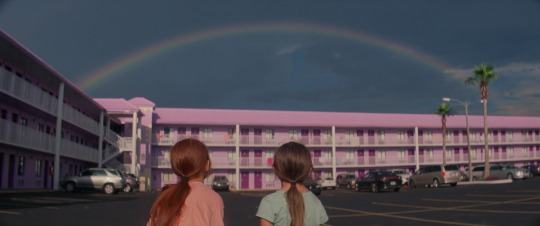
- In the shadow of Disney World, 6 year-old Moonee and her friends spend the summer playing around the Motels they live in.
- Pastel bright colours. Every person has survived a storm. Explore the wasteland of failed corporate America. Become a child again.
- Baker continues to masterfully blend fiction with reality, wrapping one in the other.
- Doesn’t ask you to like the characters. Doesn’t need to. One of the very best films of the year.
4.5/5.
Opens 10th November.
#11: INGRID GOES WEST, directed by Matt Spicer, 98 minutes
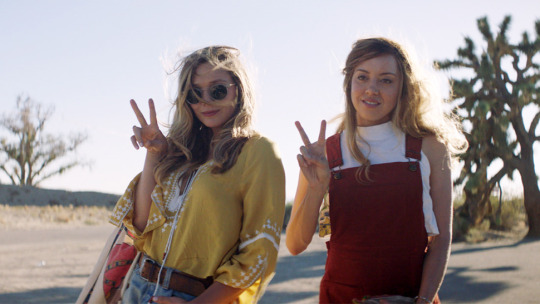
- Ingrid moves to California to become Instagram famous.
- An enjoyable, fun Saturday night film.
- Elisabeth Olsen as ‘photographer’ Taylor Sloane is note perfect. Could so easily have slept-walked through it, but didn’t. Her relationship with brother Nicky is so, so good. Idea of this Instagram famous rich girl with her crazy, pill-junkie, roid-monkey brother who she knows is terrible but loves him and is sort of as vapid as he is- just knows how to hide it better. And man, he is SO evil. Haven’t hated a character as much as I hated him in a while.
- Plaza holds it together. Her and the film trust you to realise how mentally ill she is without reminding us too much.
- 1st half is superbly played... loses it somewhere in the middle of the 2nd act but picks up again at the end.
- Music was terrible?! Suggested some weird criss-cross in tone of the film.
- I GET IT! THE INTERNET IS BAD!
3.5/5.
Opens 17th November.
#12: You Were Never Really Here, directed by Lynne Ramsey, 85 minutes

- Gulf War veteran Joe is known for the brutality he inflicts on captors of the children he’s rescuing.
- Deeply troubled. Beautiful. Precise. Scatter-brained. Focused. A violin strung too tightly, then played by a madman. How can something so stripped down and raw feel so symphonic and wholesome? I feel like I’ve been repeatedly smashed in the head with a hammer... but enjoyed it.
- Jaoquin Phoenix. Lynne Ramsey. Johnny Greenwood.
- There are things in this that will play on loop in my head for the rest of my life.
4.5/5.
Opens in early 2018.
#13: Three Billboards Outside Ebbing, Missouri, directed by Martin McDonagh, 115 minutes

- A mother takes desperate steps to pressure local law enforcement to find her daughter’s killer.
- Perfectly woven and layered characters. I fucking hate the phrase ‘the character arc’, but if I were teaching a class in it- I’d show this film.
- A film about relationships, and every relationship between every character or creature or inanimate object is perfect.
- McDonagh loves theatrical sensibilities. Nobody does grand, rich set-pieces quite like him... makes highly stylised situations feel real in the world he sets up.
- I could have watched hours more of these characters interacting.
4/5.
Opens 12th January 2018.
STRAY THOUGHTS:
- Felt spoilt in the audiences I had the pleasure of watching these films with. Always respectful.
- Every time Clare Stewart (head of festival) came on stage to present a film, I just couldn’t help but smile. Bumped into her after a screening and told her my student loan situation. I don’t think she knew what to say.
- DON’T WATCH THE TRAILERS OF ANY OF THESE FILMS. THEY SPOIL SO MANY OF THEM.
- I am consistently shocked by how enamoured I am with celebrities. Some weird conditioning in my brain. Am glad I didn’t queue up to get a picture with anyone. Saying that, this screenshot from a random interview I saw online where I’m juuuust to the left of Emma Stone will live on my wall forever.

ughhhhhh i’m a loser ughhhhh
2 notes
·
View notes
Text
Stills of making process, collaboration with photographer Olivia Singleton


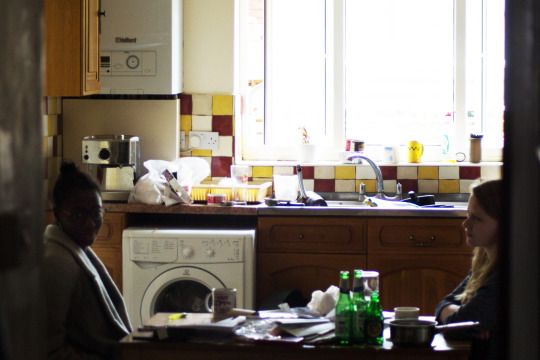

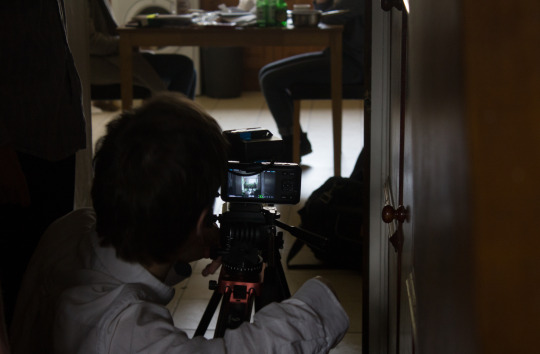

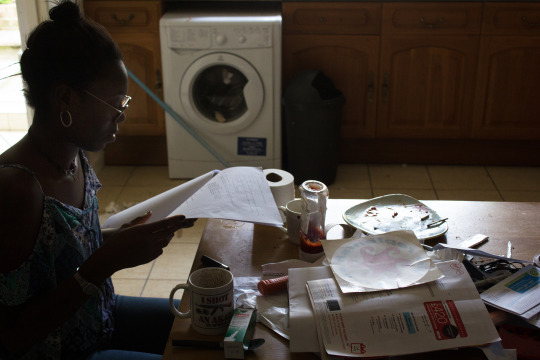


0 notes
Text
The Possession of Jane Balan (2017) inspiration collection #2
youtube
Blue is the Warmest Colour (2013) Directed by Abdellatif Kechiche
youtube
vimeo
Possession (1981) Directed by Andrzej Żuławski
youtube
True Detective (2014) Directed by Cary Fukunaga
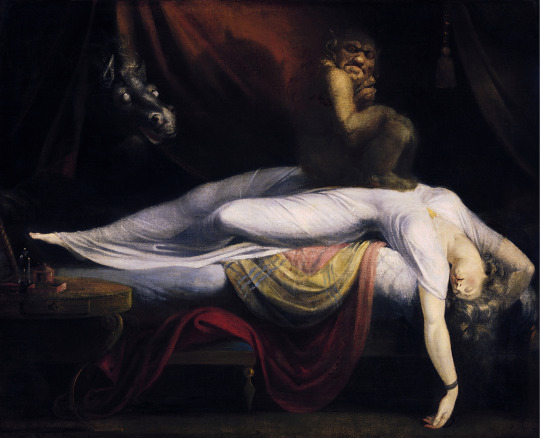
The Nightmare by Henry Fuseli
youtube
Annabelle (2014) Directed by John R. Leonetti
0 notes
Text
The Possession of Jane Balan (2017) inspiration collection #1
youtube
The Conjuring 2 - Main Trailer (2016) Directed by James Wan
youtube
The Exorcist (1973) Directed by William Friedkin

The Neon Demon (2016) Directed by Nicholas Winding Refn
youtube
romanticization of mental illness by Savannah Brown
youtube
Scene from Insidious: Chapter 3 (2015) Directed by Leigh Whannell

Kids (1995) Directed by Larry Clark
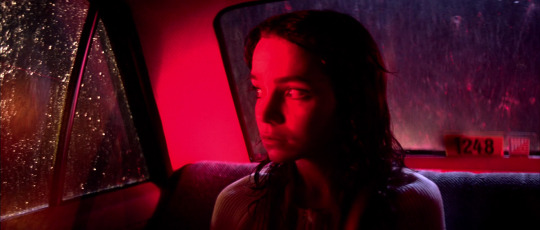
Suspiria (1977) Directed by Dario Argento
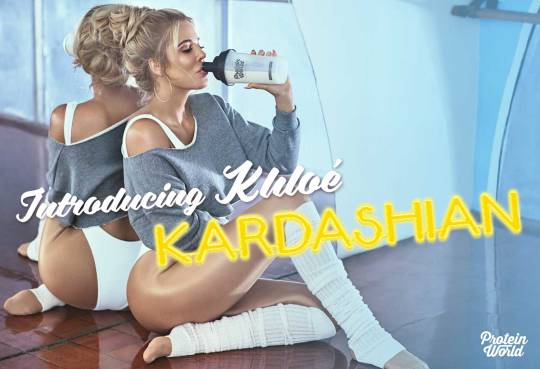
‘Can you Keep up with a Kardashian?’ Advert (2017) I WISH THIS WAS SATIRE


Thirty Two Kilos (2008) Ivonne Thein
youtube
The Conjuring (2013) Directed by James Wan
1 note
·
View note
Text
24th - 26th.
- I’ve spent the last few days reflecting on the 2nd experiment and gathering stories. The most interesting thing I heard was that during the questions, one girl began to feel like the other girl’s younger sister. She was the same age and a few questions related directly to that. Super interesting how complex relationships begin to form incredibly quickly. I spoke to someone who out and out didn’t like their partner right from the beginning with all of the group work. It just proves that the questions, however powerful, can’t make 2 people fall in love or feel any real affection for each other. They both have to be willing. Part of what made the person not like the other person was she felt he wasn’t taking it all seriously.
A few people involved messaged me saying they couldn’t find Emily Ripley anywhere on the internet. Ah. This is where it gets difficult. The problem with anyone finding out the story with the experiment isn’t real is that it could negate any positive feelings they took from it, because they could think ‘oh well none of it is real, so I didn’t feel anything.’ However, quite the opposite is true. The story not being real means that everything they felt with the person they were paired with was 100% created from them. It was about real human emotion they both felt- not some crazy sci-fi story that made them feel that way. They created something special for themselves. I did nothing but facilitate and coax it out. So, if I tell anyone that in a way, I’m Emily Ripley, I need to do it delicately. They can’t feel like I’ve just tricked them for the fun of it, because that was in no way my intent with the Ripley story.
Melainie Carr PhD student on the other hand... how they hell do I explain that to anyone? The actress stayed in character even when we left the building and was chatting to people. It’s going to be difficult to stress that I’m not a psychopath, but she definitely had such an impact on what the experiment was like I think it’s justifiable.
Overall, it’s started to get me excited about creating again. I’d like to continue to hold these kind of performances throughout the year. They’re fun and create real human emotion which is infinitely rewarding because it gives. It gives to everyone there, and then in turn everyone who even hears about it. Words can’t describe the buzz that gives me!
- I’m now thinking about what to exhibit. That’s the difficulty when you consider the artwork the feeling or memory you give to someone- there’s nothing very practical to show when you have a very practical situation of ‘here’s your space, you’ve got this long to put it up and show it for.’ I could show the photos, or the video- but it just feels wrong. It’s not what the whole process has been about. I don’t want an audience to look at photos and think ‘well that happened- great.’ I want to give them at least something of the feeling from the experiment. I thought about just displaying the story of Emily Ripley... but it feels a little bit lame and like a cop out. I thought about displaying the notes that the actress playing Melanie Carr took- in a kind of ‘artefact’ Jamie Shovlin way (it’s funny how ideas from the very beginning of this thought process always seem to link back around). However, I’ve decided to show the questions. At first, I thought on 3 separate sheets of A3, a little like pillars of the 10 commandments. A friend I spoke to about it however suggested that I print the questions extremely small all on 1 sheet of A4. It forces the audience to get close up to the questions to read them, and in some way feel the intimacy that everyone in the room felt with their partner in the experiment. Great. I’ll try that and see how it goes.
- Here’s my ideas wall, everything I’ve been thinking about the Love Experiment exploration. Jesus, it looks like it’s straight out of a cop show when they find the serial killer’s house.
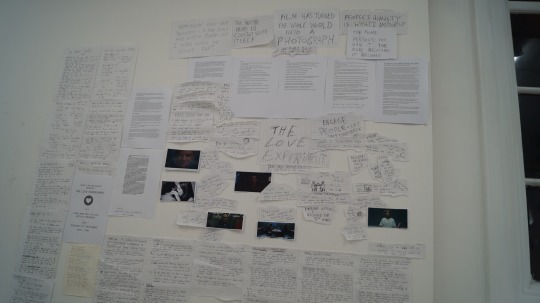
1 note
·
View note
